When you buy through our links, we may earn a commission. Products or services may be offered by an affiliated entity. Learn more.
Best Mattress for Lightweight Sleepers
Lightweight individuals generally have the same requirements as other sleepers — a supportive and comfortable mattress. However, a model that provides this balance looks different for sleepers within this weight group. The wrong mattress can create pressure points (in the shoulders, hips, and other areas that have prolonged contact with the mattress) or cause the spine to curve unnaturally, leading to aches or discomfort.
Below, we’ll cover mattress construction and performance, which models best suit different sleep positions, and what to consider when shopping for a mattress. And don’t worry: We review and update our top picks consistently to reflect the best beds for lightweight sleepers.
Weight Disclaimer
Please note: For the purposes of this page, we’re talking about adults who weigh 130 pounds or less. Although we use the terms light or lightweight for brevity and convenience on this page to describe sleepers, we do not use weight categories, such as average or overweight, as they can be misleading and dependent on the individual.
We use 130 or fewer pounds as a practical standard of size when discussing how mattresses interact with sleepers’ bodies. We’ve found that adults who weigh less than 130 pounds have similar needs for a mattress in terms of firmness and thickness.
Our Top Picks
See our top picks below or refine your results
Refine Your Results
Your Personalized Results
Reset
-
Best Mattress Overall
:Helix Sunset
Shop Now
-
Most Comfortable Mattress
:Leesa Sapira Chill Hybrid
Shop Now
-
Best Value Mattress
:Silk & Snow Mattress
Shop Now
-
Best Luxury Mattress
:Saatva Classic
Shop Now
-
Best Mattress for Back Pain
:WinkBed
Shop Now
-
Best Mattress for Pressure Relief
:Bear Elite Hybrid
Shop Now
-
Best Mattress for Side Sleepers
:Nolah Evolution 15
Shop Now
-
Best Mattress for Combination Sleepers
:Brooklyn Bedding Signature Hybrid
Shop Now
-
Best Mattress for Couples
:Layla Memory Foam Mattress
Shop Now
Best Mattress Overall
8.5 /10 Test Lab Score
Helix Sunset
Exceptionally soft mattres good for lightweight side sleepers.
Key Details
- Who It’s Best For: Side and back sleepers under 130 pounds, as well as couples.
- Feel: One of Helix’s plushest mattresses, the Sunset is soft (3) and feels exceptionally adaptive.
- What It’s Made Of: A comfort system with copper-infused memory foam and adaptive polyfoam layers, followed by pocketed coils with a reinforced perimeter.
- What We Don’t Like: Too soft and prone to uncomfortable sinkage for most people who weigh 130 pounds or more.
Scoring & Reviews
The following ratings show how suitable this mattress is for different sleeping positions and sleeper weights. These scores are determined by how well the mattress supports and relieves pressure for each sleeper type.
In addition to the hands-on feedback from our team, we conduct a number of quantitative tests in our Test Lab. The below ratings are based on the experience of our testers.
SELECT AN ICON TO VIEW DETAILS:
Motion Isolation
As the softest model in the base Helix lineup, the Helix Sunset predictably tested really well compared to their other Helix models. Its foam comfort layers are thick and plush, and our testers noticed almost no motion transfer resulting from movement across the bed.
Pressure Relief
All of the Helix base models have somewhat thick foam comfort layers and conform fairly close to the body. Consequently, they’ve all performed fairly well in our pressure mapping tests, with notably less pressure in the hips and shoulders than many hybrids. The Sunset in particular relieves pressure better than other Helix beds, as it’s the softest model.
Temperature Control
The Helix mattresses perform about average for hybrids when it comes to sleeping cool. Memory foam is well-known for its tendency to sleep hot, as it often traps and retains heat through the night, but the coil cores of these beds promote airflow to help balance out heat retention.
Edge Support
All Helix mattresses feature a reinforced perimeter, meaning the coils on the edges are thicker than the coils in the middle of the bed. When putting this to the test, we found significantly less sinkage on the edge than the middle while applying weight. As a softer model in the Helix lineup, the Sunset provides slightly worse edge support than other Helix beds.
Ease of Movement
Helix mattresses tend to be fairly responsive and bouncy, and all tested well for ease of movement. The Sunset in particular tested a little worse, as the softer layers can cause sinkage and inhibit movement.
Durability
Overall, we anticipate that all of these Helix mattresses will hold up well over the years. While some boast average durability features — the Plus and Sunset, for instance, which have slightly softer designs — others may last up to nine, like the Twilight and the Dawn. In our research, we found that firmer Helix models would probably last longer with layers of coils preventing sinkage over the years.
Full Breakdown
Why It’s Best Overall
The Helix Sunset has the soft (3) feel preferred by many lightweight sleepers with the additional benefit of a pocketed coil support system. The comfort system includes plush foam formulated with lightweight sleepers in mind, providing pressure relief and deep cushioning.
How It Performed
Side and combination sleepers are likely to enjoy this mattress the most, as the memory foam comfort system hugs the body to prevent and address pressure points. However, the Sunset might not provide enough support for stomach sleepers, who may feel as if they’re sinking into the bed.
In addition to pressure relief, this model excels at isolating motion. The wrapped coils and foam layers work together to absorb movement, preventing disturbances from partners who toss and turn.
Construction Breakdown
The Sunset begins with a breathable, stretchy cover made from polyester and a comfort system that includes three foam layers. The top layer consists of a soft memory foam engineered to compress easily, making it more effective at relieving pressure points for lightweight sleepers. A polyfoam transitional layer creates a comfortable buffer between the memory foam and support core, preventing sleepers from sinking too deeply into the mattress.
The support core includes 8 inches of pocketed coils that provide responsive support. Individually wrapped coils that move independently from one another reduce motion transfer. Additionally, a reinforced perimeter provides increased edge support. A thin, durable layer of polyfoam completes the base.
Helix backs the Sunset with a 10-year warranty and 120-night sleep trial. Free shipping is available to shoppers in the contiguous U.S.
Read Our Full Helix Sunset ReviewMost Comfortable Mattress
9.0 /10 Test Lab Score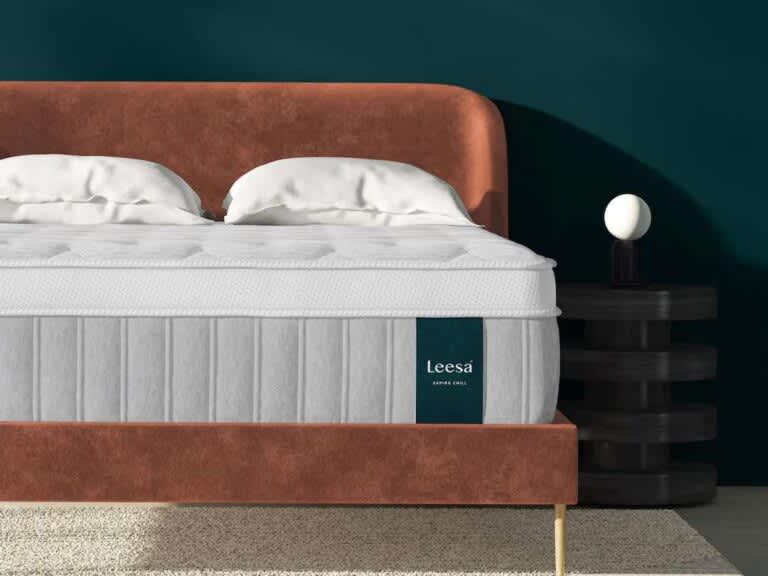
Leesa Sapira Chill Hybrid
A foam hybrid that cushions your body without trapping heat.
Key Details
- Who It’s Best For: Side and back sleepers across different weight groups, couples, hot sleepers, and people who are prone to back and hip pain.
- Feel: Sold in medium (5), medium firm (6), and firm (7) designs.
- What It’s Made Of: Four comfort layers, including gel-infused polyfoam and memory foam, over three-zone pocketed coils with a reinforced perimeter and high-density base foam.
- What We Don’t Like: Initial off-gassing smells can linger for up to 72 hours after unboxing, and the thick profile requires a fitted sheet with deep pockets.
Scoring & Reviews
The following ratings show how suitable this mattress is for different sleeping positions and sleeper weights. These scores are determined by how well the mattress supports and relieves pressure for each sleeper type.
In addition to the hands-on feedback from our team, we conduct a number of quantitative tests in our Test Lab. The below ratings are based on the experience of our testers.
SELECT AN ICON TO VIEW DETAILS:
Motion Isolation
In our tests, the Sapira Chill Hybrid’s foam-heavy comfort system absorbed most motion with ease. Even when one tester shifted positions or got up, the other hardly noticed — especially on the medium and medium firm models. For couples, this mattress is a standout in motion isolation for a hybrid.
Pressure Relief
Pressure relief was a top-scoring category across the board. Our side sleepers noted significant cushioning in the hips and shoulders, and even our back sleepers experienced a nice balance of support and contouring. The plush top layers adapted closely without making us feel stuck.
Temperature Control
Though it contains multiple foam layers, the Sapira Chill didn’t trap as much heat as we expected. The open-cell construction and airflow from the coil core helped maintain a neutral sleep temperature for most of our testers — particularly on the firmer options where we didn’t sink in as deeply.
Edge Support
We were impressed with how well the Sapira Chill held up around the edges. The reinforced perimeter coils gave us a stable feel when sitting or lying near the sides of the bed, which is especially helpful for co-sleepers or anyone who likes to spread out.
Ease of Movement
Movement on the Sapira Chill felt smooth, especially for a hybrid with four foam layers. While the softer model had a bit of a “sink-in” feel, the underlying coil support and responsive transition foam made it easy to shift positions or get in and out of bed on all three firmness levels.
Durability
The Leesa Sapira Chill Hybrid earns high marks for durability. As a hybrid mattress that uses four distinct foam layers, two of which are high-density polyfoam, sleepers can rely on cradling support without sinkage. Add to that the pocketed coil layer with individually wrapped springs, and the mattress should provide at least eight years of comfort.
Full Breakdown
If you’re a lightweight sleeper, chances are you’ll prefer a softer, more adaptive mattress – but this isn’t always the case. Leesa’s Sapira Chill Hybrid is available in medium (5), medium firm (6), and firm (7) designs to satisfy a wide range of sleeper types. The softest of these three models earned the highest ratings from testers on our team who weigh less than 130 pounds, but Leesa’s generous return policy means you don’t have to settle for subpar comfort if your initial selection isn’t quite right.
How It Performs
Hands-on tests indicate the medium Sapira Chill Hybrid is plush enough for most side and back sleepers under 130 pounds. At the other end of the spectrum, the firm design earned favorable ratings from our side sleepers over 230 pounds and back sleepers of at least 130 pounds. The medium firm model is the most balanced option, and should be comfortable for sleepers between 130 and 230 pounds regardless of which position they primarily use.
Since the Sapira Chill has a comfort system with thick foam layers, it isolates motion better than most competing foam-over-coil hybrids. The same is also true of pressure relief – most of our testers felt little to no pressure buildup while lying on the mattress. At the same time, the Sapira Chill contains breathable materials that don’t retain too much heat, so you should find that the mattress sleeps cool.
Construction Breakdown
The Sapira Chill Hybrid’s comfort system consists of four individual layers, beginning with 2 inches of gel-infused polyfoam sewn to the Euro-top cover. Layers of memory foam and adaptive polyfoam provide additional cushioning for your sore spots, while responsive transitional foam pushes back against your weight to keep your body on an even plane.
Pocketed coils and high-density base foam make up the support core. The coils are divided into three zones to ensure extra pushback around your midsection, and reinforced along the perimeter to bolster edge support.
Trial, Shipping, and Warranty
Leesa is one of the only online mattress brands that offers free shipping to all 50 states. Select locations in Canada also qualify for free delivery. The Sapira Chill Hybrid comes with a 120-night sleep trial. If you decide to keep the mattress after the return period expires, your purchase is also covered under a lifetime warranty.
Read Our Full Leesa Sapira Chill Hybrid ReviewBest Value Mattress
7.6 /10 Test Lab Score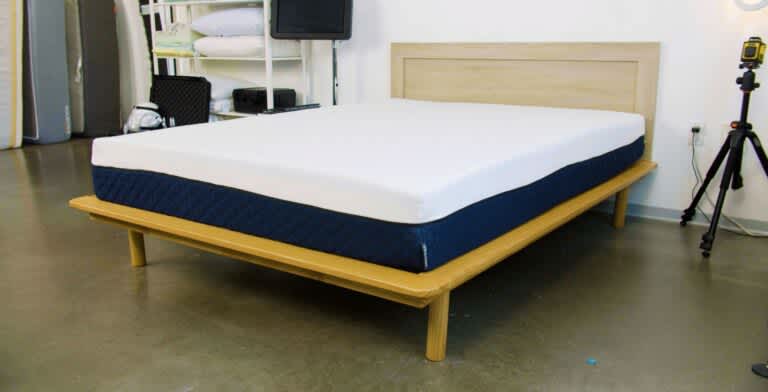
Silk & Snow Mattress
A foam mattress that conforms close to your body for pressure relief.
Key Details
- Who It’s Best For: Most sleepers under 130 pounds, provided they choose the medium (5) design.
- Medium feel is plush and adaptive with a close hugging effect. A more supportive firm (7) design is also available.
- What It’s Made Of: Gel-infused memory foam and transitional polyfoam, followed by a high-density base. Cover is removable and machine-washable.
- What We Don’t Like: Foam layers may sink too much when you move on the surface or change sleep positions.
Scoring & Reviews
The following ratings show how suitable this mattress is for different sleeping positions and sleeper weights. These scores are determined by how well the mattress supports and relieves pressure for each sleeper type.
In addition to the hands-on feedback from our team, we conduct a number of quantitative tests in our Test Lab. The below ratings are based on the experience of our testers.
SELECT AN ICON TO VIEW DETAILS:
Motion Isolation
Most all-foam models isolate motion very well, and both versions of the Silk & Snow Mattress meet this expectation. The memory foam comfort layer absorbs virtually all surface-level vibrations that might otherwise transfer across the mattress and disturb your sleep partner. The polyfoam transition layer also isolates motion quite well.While the Silk & Snow Mattress should absorb most movement, those with partners prone to heavy tossing and turning could notice some vibrations.
Pressure Relief
The Silk & Snow mattresses exceptional pressure relief comes from its memory foam comfort layer and polyfoam transition layer. A sleeper’s curves can sink into the memory foam, redistributing their weight to limit pressure buildup from critical areas like the hips and shoulders. Meanwhile, the polyfoam transition layer gently supports the sleeper without letting them sink in too deeply.
Temperature Control
The Silk & Snow model regulates temperatures better than many all-foam models. The cover is breathable enough to promote airflow on the sleep surface. Additionally, the memory foam comfort layer has a cooling gel infusion to transfer heat away from the sleeper’s body. We also noticed less heat buildup on the firmer version. That all said, the mattress – like other foam models we’ve tested – still retains some warmth and may not be a great match for hot sleepers.
Edge Support
When an individual sits or sleeps near the edge of an all-foam bed, their weight typically causes the foam to compress, making the perimeter of the bed feel unstable and limit how much of the surface a sleeper feels comfortable using.Like most all-foam models, both Silk & Snow Mattress models lack reinforced edges, allowing sinkage around its perimeter. you’ll notice less compression on the firmer model, but even then there isn’t a lot of reinforcement.
Ease of Movement
The hug of memory foam coupled with its relatively slow response to changes in pressure can make a mattress more difficult to move around on. While the Silk & Snow Mattress contains a memory foam layer, it is relatively easy to change position on compared to similarly constructed models.Because the Silk & Snow uses medium-density memory foam, its comfort layer should regain its shape more quickly than those that use high-density memory foam, especially on the firm model.
Durability
The Silk & Snow Mattress is an all-foam model that comes in three firmness levels. If durability is a top concern, choose the firm option, but you should still only expect around six or seven years of mattress life. Each model has a polyfoam base layer with a gel memory foam layer above in the comfort level, but without coil support, it will sink in over time.
Full Breakdown
The Silk & Snow features an all-foam design and medium (5) feel geared toward lightweight sleepers, along with an affordable sticker price for shoppers with tight budgets. Three layers of dense foam create a plush, adaptive surface with strong reinforcement to limit sinkage beneath heavier areas of your body. During our tests, the mattress proved especially popular with our team members who weigh less than 130 pounds. This is a great choice for people seeking a cheap mattress that also performs at a high level.
How It Performed
In addition to our testers under 130 pounds, the Silk & Snow Mattress earned favorable ratings from side sleepers up to 230 pounds during our hands-on tests. Another strong performance area was motion isolation. Our testers noticed little to no transfer when lying side by side, and we found that the memory foam responds slowly to compression. Temperature control was above-average, as indicated by our thermal body sensors, and most of us experienced minimal – if any – pressure buildup.
Construction Breakdown
The mattress’ triple-layer design begins with a top layer of memory foam. A cooling gel infusion helps reduce heat buildup to keep you cool and comfortable while you sleep. The transitional and base layers are made of high-density polyfoam, a material that stabilizes the mattress well and prevents lightweight sleepers from sinking too deeply. The cover is a stretchy poly-spandex blend. You can remove and machine wash the cover whenever a cleaning is needed. Comparatively, most mattresses sold today have non-removable covers that can only be spot cleaned.
Silk & Snow offers free ground shipping throughout the contiguous U.S. and provincial Canada. The mattress comes with a 100-night trial period, during which you may return it after testing it out for at least 30 nights. Those who keep the mattress also receive a 15-year warranty against structural defects.
Read Our Full Silk & Snow Mattress ReviewBest Luxury Mattress
9.5 /10 Test Lab Score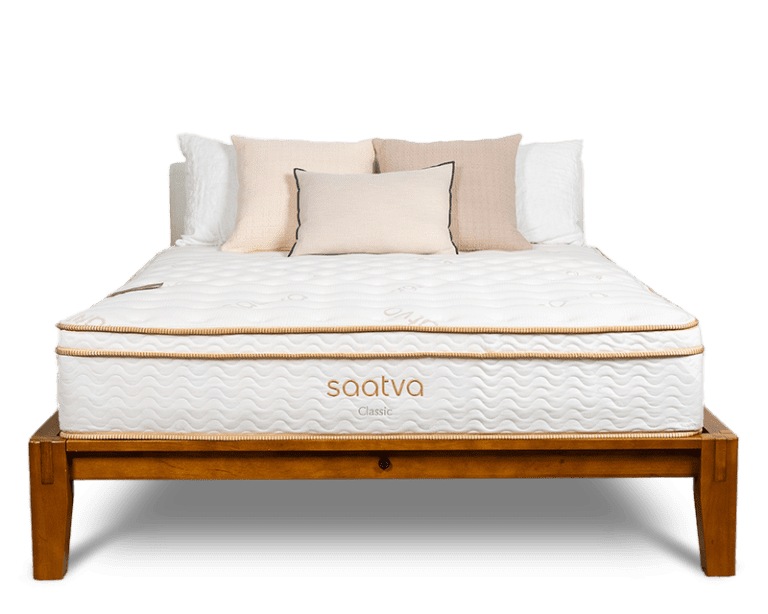
Saatva Classic
Traditional innerspring with a plush euro-top and excellent breathability.
Key Details
- Who It’s Best For: The soft (3) Saatva Classic is a solid choice for side sleepers under 130 pounds, whereas back and stomach sleepers in the same weight group may prefer the medium firm (6) design.
- Feel: Available in plush soft, balanced medium firm, and ultra-responsive firm (8) designs.
- What It’s Made Of: Adaptive polyfoam and a dense memory foam lumbar pad encased in a Euro-top, followed by transitional minicoils and robust innerspring coils in the support core.
- What We Don’t Like: Bouncy design may produce motion transfer and disrupt sleep for couples.
Scoring & Reviews
The following ratings show how suitable this mattress is for different sleeping positions and sleeper weights. These scores are determined by how well the mattress supports and relieves pressure for each sleeper type.
In addition to the hands-on feedback from our team, we conduct a number of quantitative tests in our Test Lab. The below ratings are based on the experience of our testers.
SELECT AN ICON TO VIEW DETAILS:
Motion Isolation
Motion isolation is one of the Saatva Classic’s weaker performance areas. The dual-coil design makes the surface responsive to movement, resulting in a noticeable bounce when you switch sleep positions or get in and out of bed. This can be problematic if you share your bed with a partner, as their movements can disrupt your sleep and vice versa.
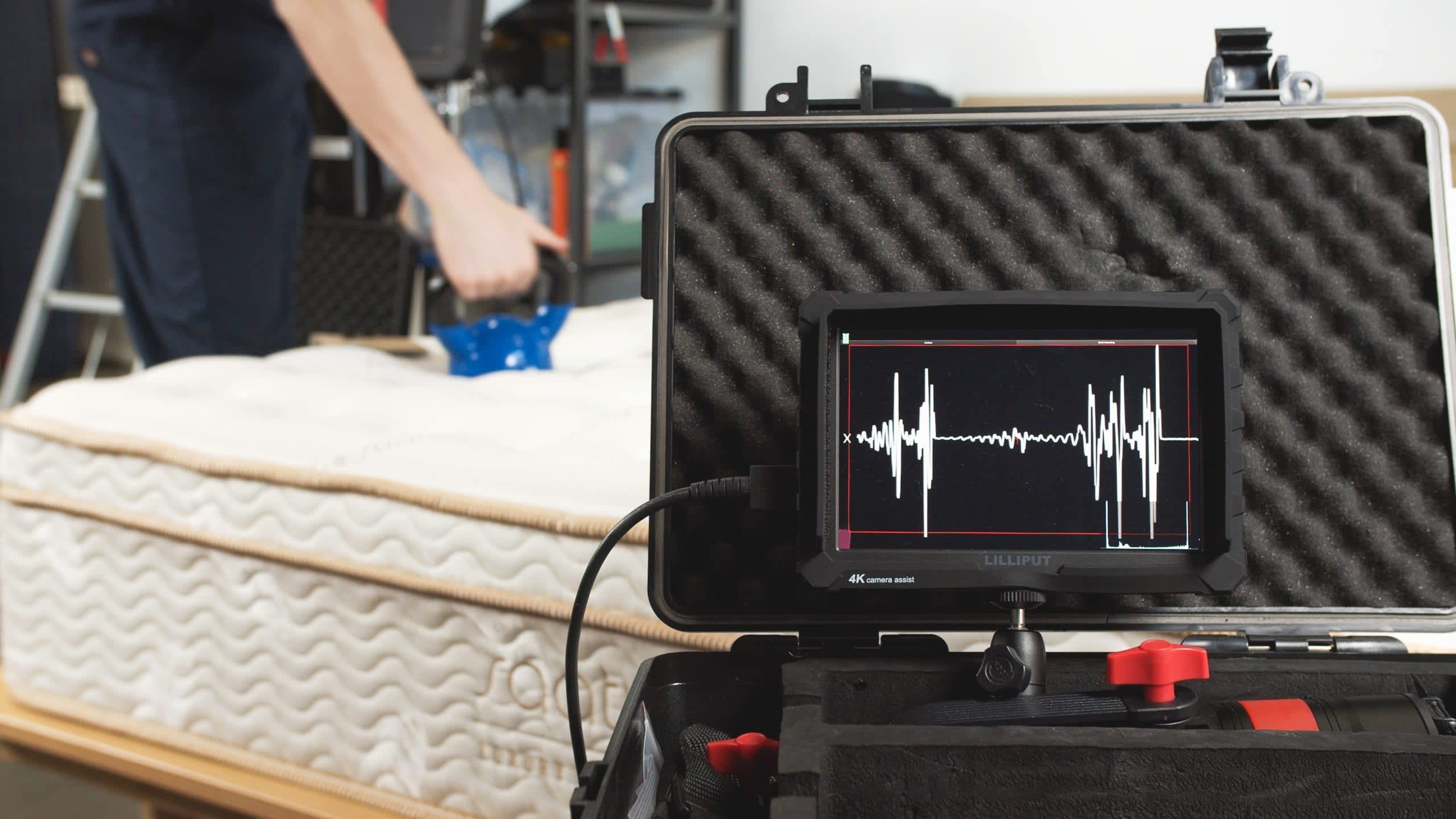
Pressure Relief
While all of the Saatva firmness options have pressure-relieving potential, the amount of pressure relief that an individual experiences on the mattress will vary based partially on their weight and sleep position. Individuals who weigh under 130 pounds will likely experience the most pressure relief on the Plush Soft version of the mattress, while sleepers over 230 pounds will likely get the best balance of contouring and support from the Firm version.
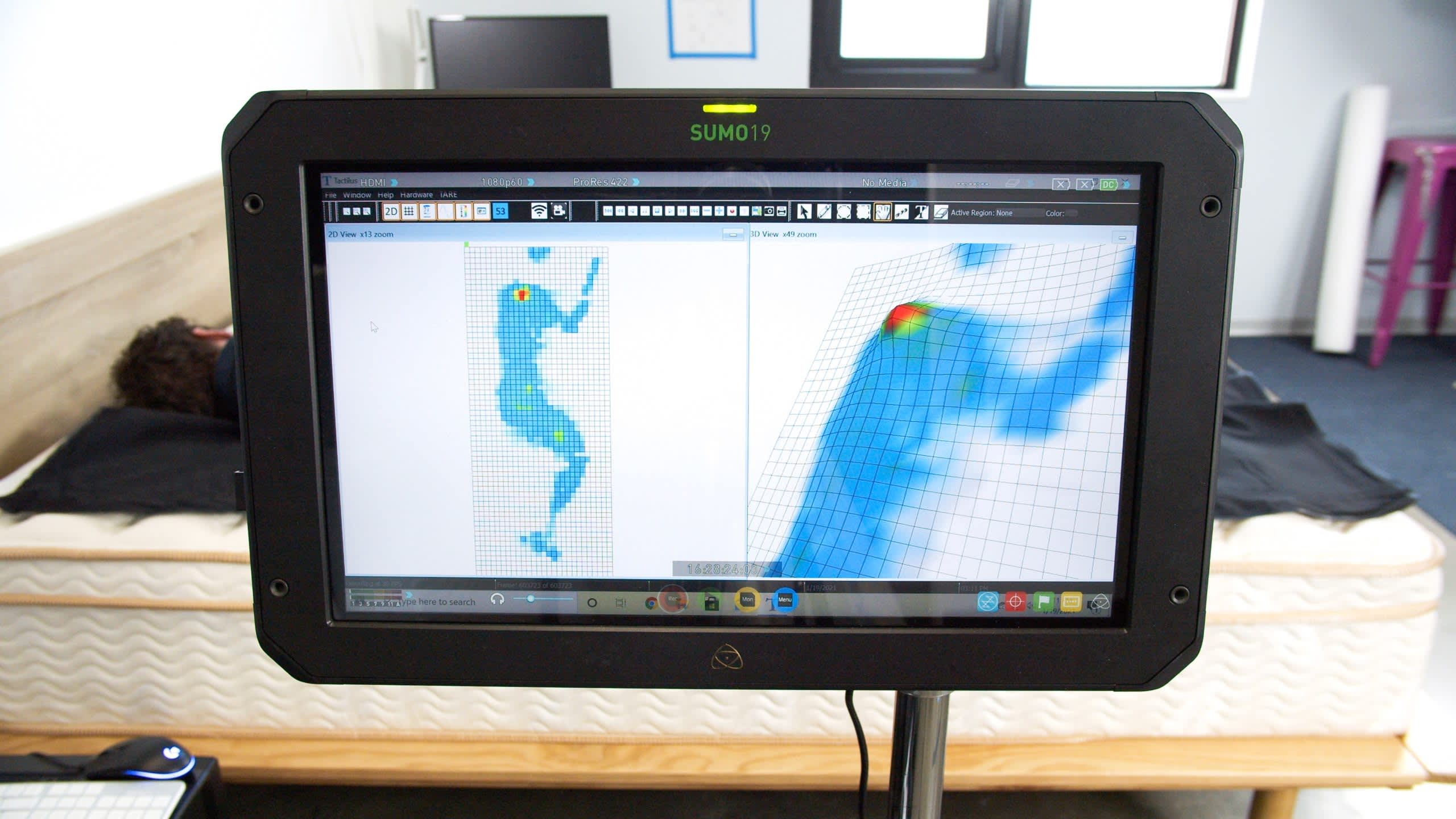
Temperature Control
While hybrid mattresses tend to sleep cool, the Saatva Classic’s construction may help it sleep even cooler than many other hybrid models. While all the firmness options may help promote a cooler night’s sleep, the Plush Soft version has more conforming that could lead to slightly more heat retention.
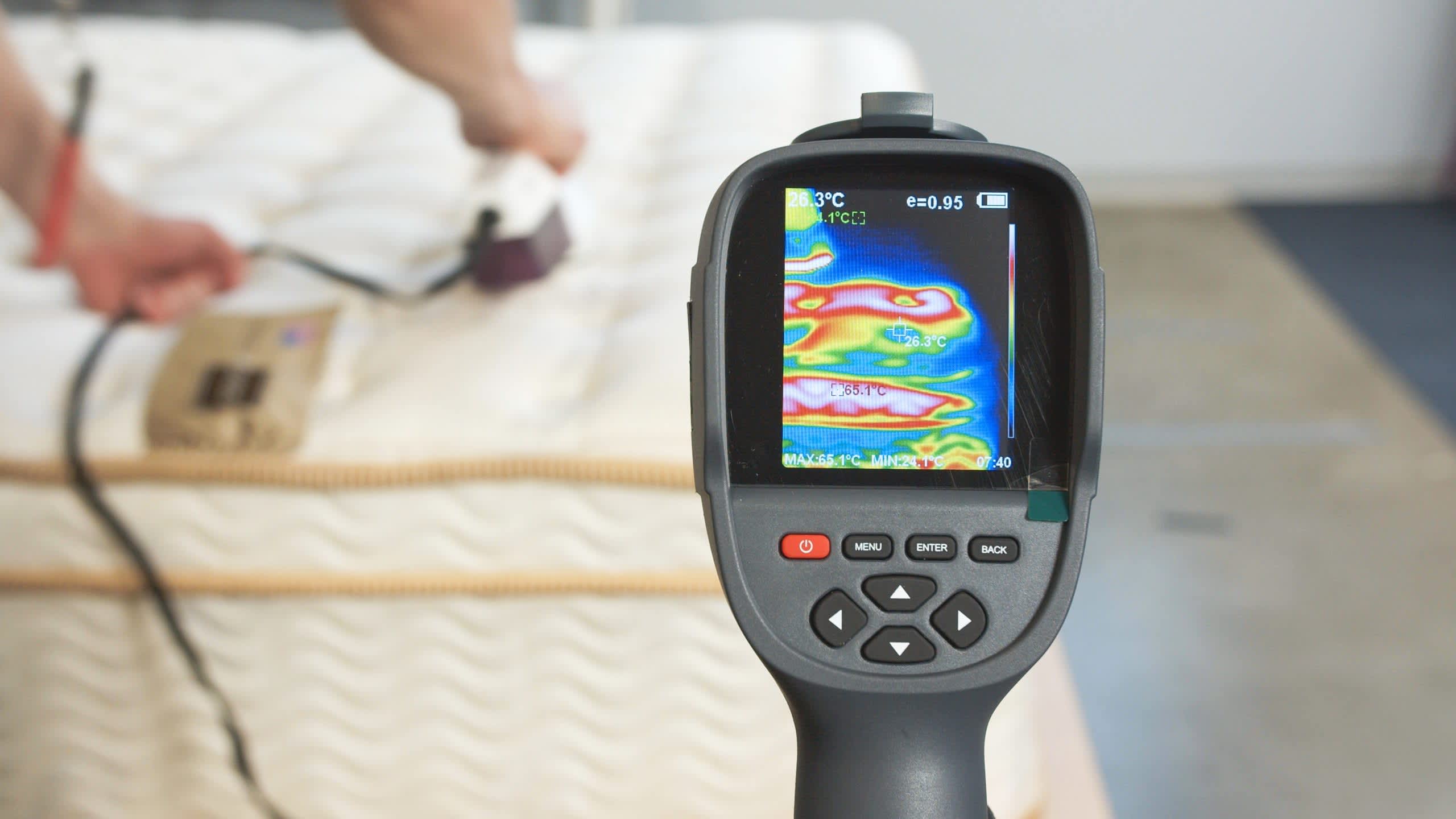
Edge Support
The Saatva Classic has a sturdy enough edge to allow almost all individuals to sit or sleep near the perimeter without excessive sinkage. This reinforcement is excellent even compared to most hybrid models.Because the Plush Soft version of the Saatva allows individuals to sink in more, its edges may not feel quite as secure as those of the Luxury Firm and Firm versions of the mattress.
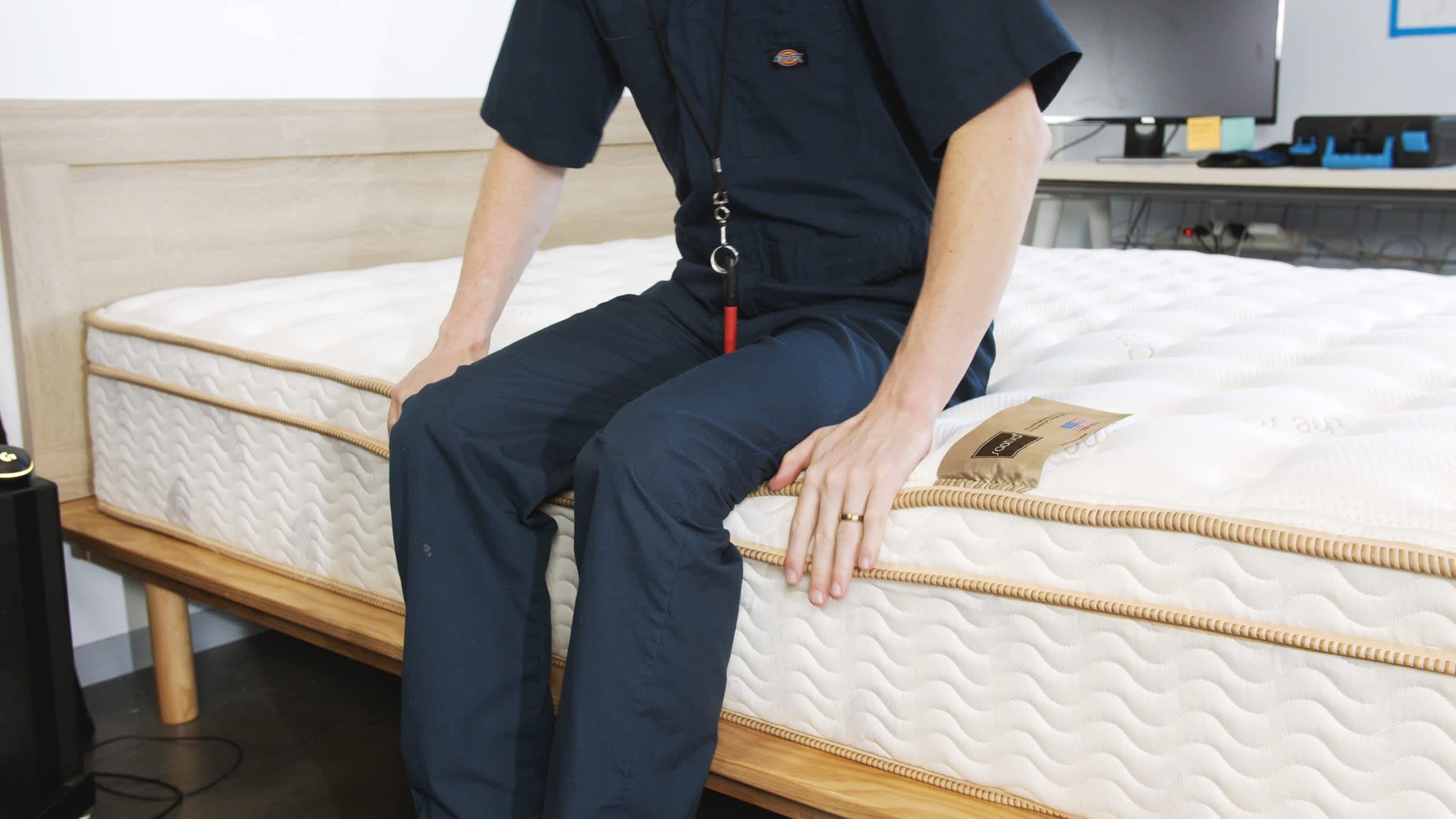
Ease of Movement
The Saatva Classic’s comfort system consists of polyfoam and minicoils. While these materials conform to your body, they regain their shape more quickly than memory foam. This prevents sleepers from feeling “trapped” in the bed.All three designs are relatively easy for sleepers to move across and change positions on. However, most individuals will probably find the firmer versions of the mattress easier to move on, since they conform less than the Plush Soft version.
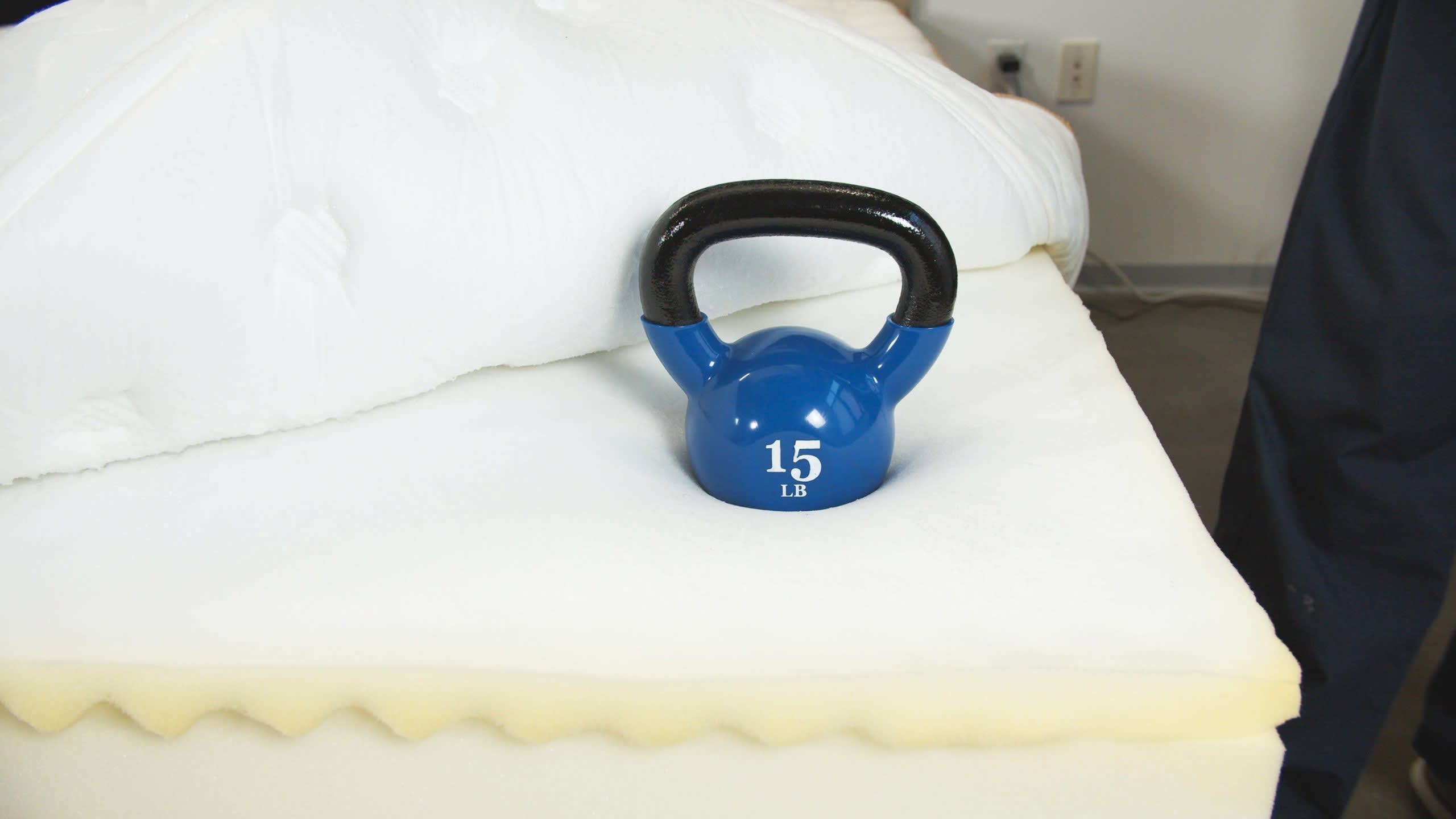
Durability
The Saatva Classic is stacked with features that help ensure durability. It’s constructed with both pocketed and support coils, plus polyfoam and memory foam comfort layers for additional comfort and support. Shoppers have a choice of thickness and firmness levels, and in general, going with thicker and firmer options can help add to the longevity. With its thick, 13-gauge coils in the bottom layer providing a sturdy base, this mattress should easily make it to the 10-year mark.
Full Breakdown
The Saatva Classic is a premium innerspring mattress available in three firmness levels. Each model targets a different type of sleeper, though they all perform exceptionally well in various categories, including support, pressure relief, responsiveness, and durability. Though this model has an above-average price-point, the added cost may be worth it to shoppers who want a high-end model that’s likely to have a longer lifespan.
How It Performed
The Saatva Classic’s thoughtful design resulted in it excelling during our in-house performance testing. The innersprings keep the mattress responsive, and the wrapped coils and memory foam give it above-average motion isolation. Air flows easily through the mattress core, helping to keep hot sleepers cool.
With three firmness levels to choose from, lightweight sleepers of all body types should be able to find a compatible model. Lighter side sleepers should consider the soft (3) feel, while the medium firm (6) option best suits stomach and back sleepers. However, many lightweight sleepers may find that they don’t weigh enough to compress the firm (8) model’s layers.
Construction Breakdown
While materials and specifications vary slightly between models, they all share the same basic construction. The Classic’s top layer consists of a Euro-top with polyfoam quilted directly into its organic cotton cover. With a memory foam layer below, the mattress provides cushioning and a plush feel. A patented spinal zone active wire and increased lumbar support are designed to keep your spine evenly aligned and help prevent back pain.
The support core features a coil-on-coil design that includes pocketed microcoils and innersprings surrounded by polyfoam that heightens edge support. The individually wrapped microcoils better adapt to your body’s unique movements and help prevent excess motion transfer.
Saatva provides free White Glove delivery to shoppers in the contiguous U.S. Those wishing to take part in the 365-night sleep trial should note that they will be charged a $99 fee to return their mattress. Each Classic carries a lifetime warranty.
Read Our Full Saatva Classic ReviewBest Mattress for Back Pain
9.4 /10 Test Lab Score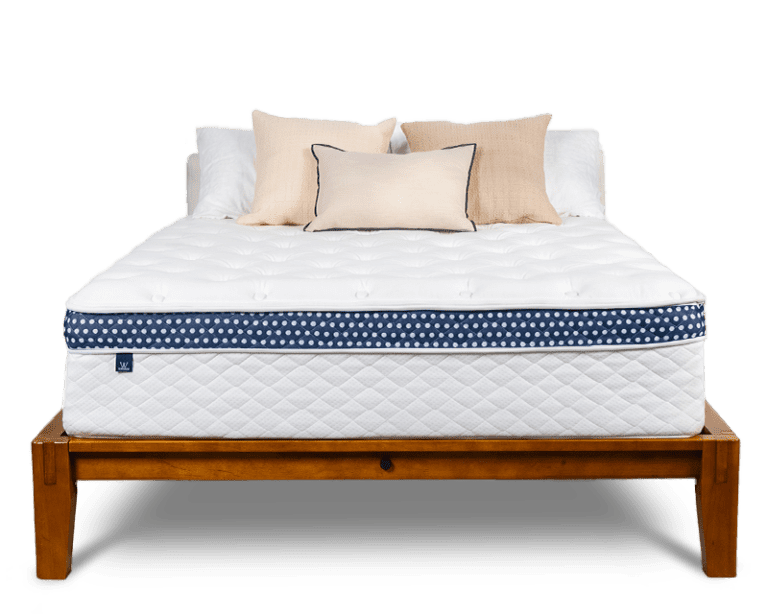
WinkBed
High end hybrid bed providing ample support, cushion, and cool sleep.
Key Details
- Who It’s Best For: Lightweight sleepers living with chronic or frequent back pain.
- Feel: Four firmness levels are available. Side, back, and stomach sleepers under 130 pounds will probably prefer the two softest options, medium soft (4) and medium firm (6).
- What It’s Made Of: Standard WinkBed models contain adaptive polyfoam comfort layers, while the “Plus” (8) has zoned latex instead. All feature a zoned, pocketed coil support core with perimeter reinforcement.
- What We Don’t Like: Mattress may emit a strong off-gassing smell for up to 72 hours after unboxing.
Scoring & Reviews
The following ratings show how suitable this mattress is for different sleeping positions and sleeper weights. These scores are determined by how well the mattress supports and relieves pressure for each sleeper type.
In addition to the hands-on feedback from our team, we conduct a number of quantitative tests in our Test Lab. The below ratings are based on the experience of our testers.
SELECT AN ICON TO VIEW DETAILS:
Motion Isolation
All four firmness options offer above-average motion isolation compared to other hybrids we’ve tested. The Softer, Luxury Firm, and Firmer models have polyfoam layers that significantly absorb vibrations, preventing motion from traveling across the surface. The Plus features latex, and does not isolate as much motion – though it still received high marks from our team. Although the coil core gives the mattress some bounce, the foam layers are substantial enough to dampen motion transfer.
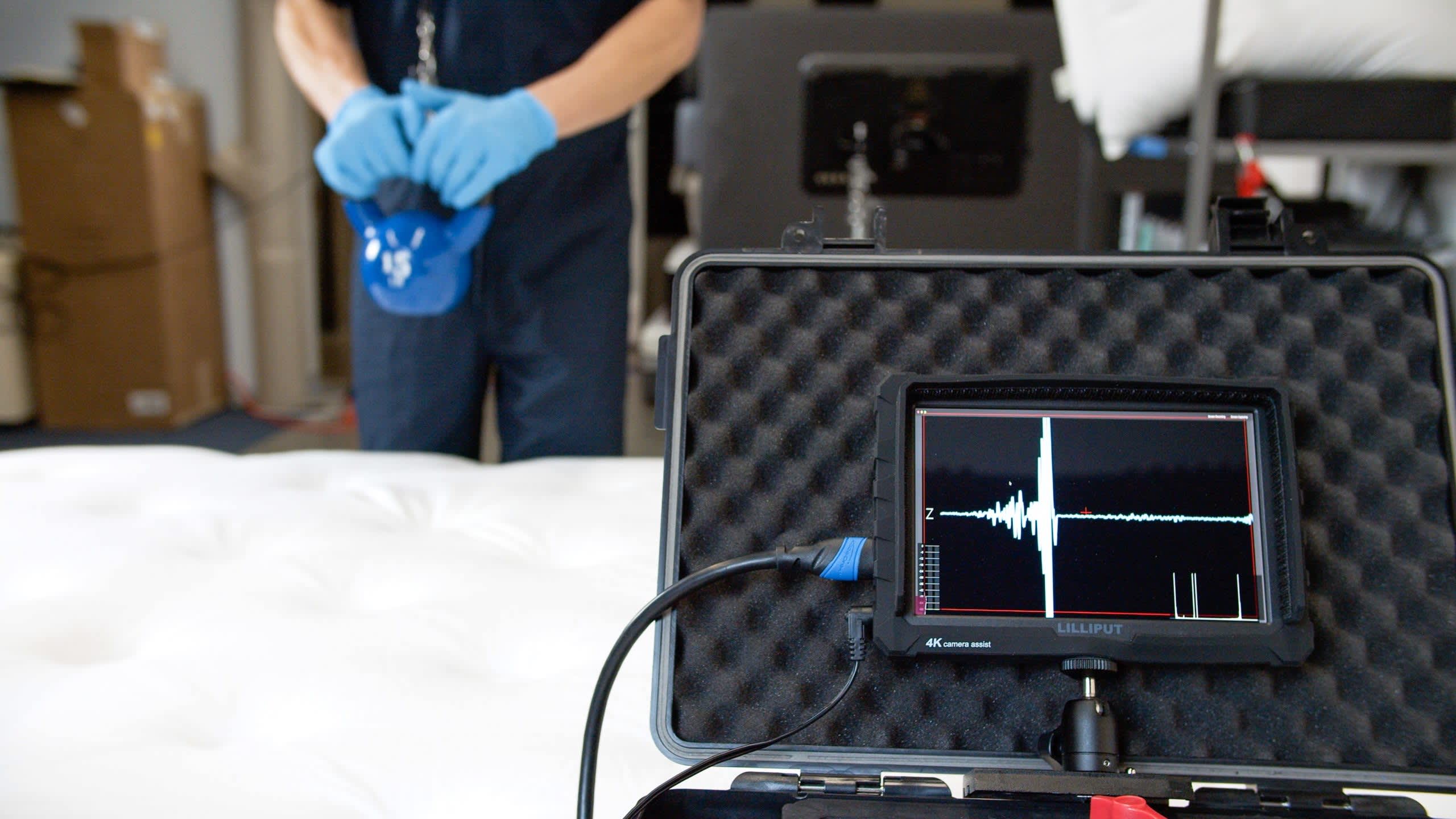
Pressure Relief
Like with many hybrid models, the WinkBed’s strong contouring can help relieve painful pressure points. Using pressure-mapping sensors, we found the Softer, Luxury Firm, and Firmer versions of the mattress generously cradle your body and ease pressure off sensitive joints, thanks largely to the multiple foam layers. The Plus version uses polyfoam and latex layers, which offer gentle contouring as well.
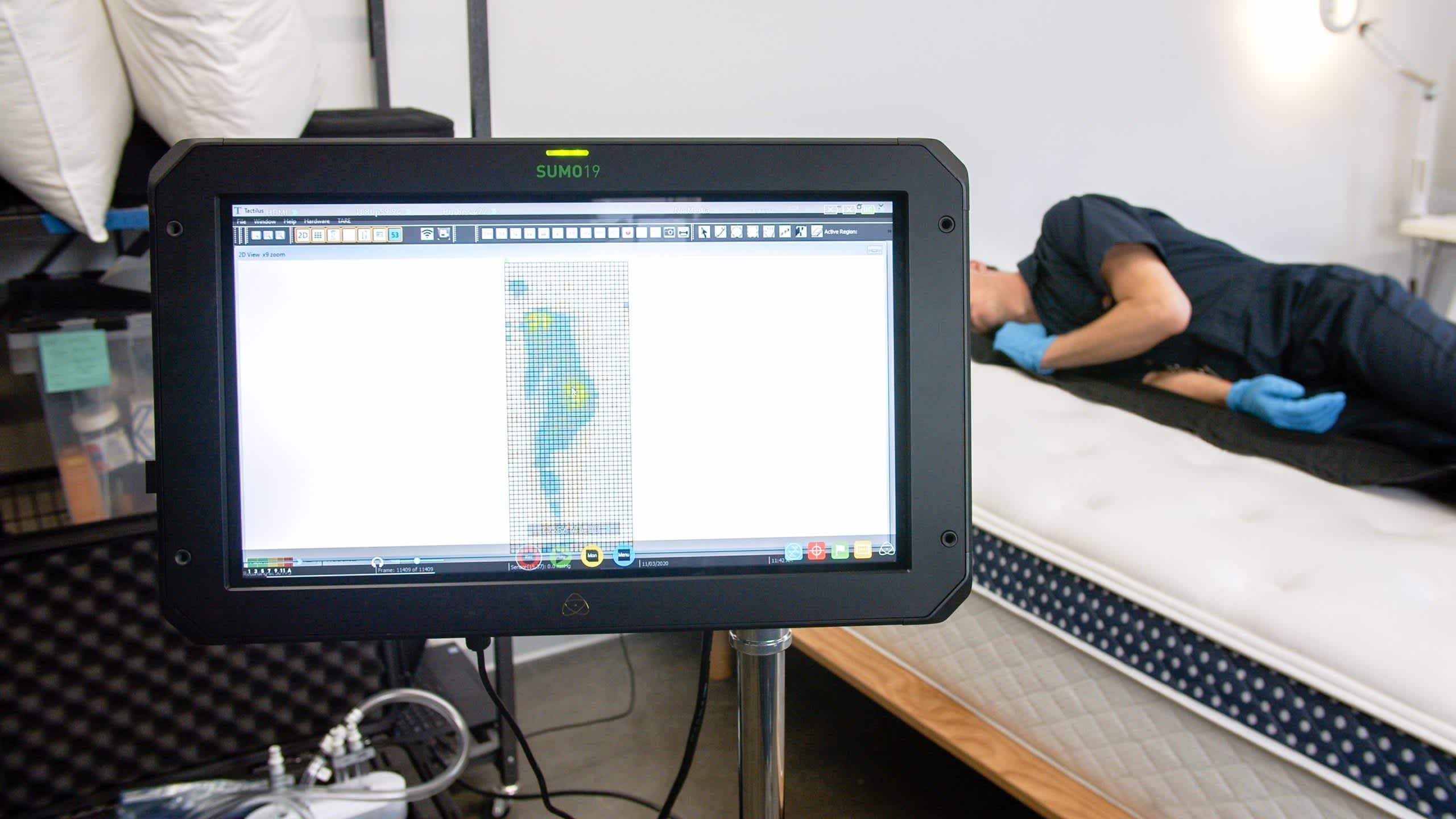
Temperature Control
The WinkBed’s Tencel cover wicks heat and moisture away from the sleeper’s body. In the Softer, Luxury Firm, and Firmer models, polyfoam infused with cooling gel helps to minimize heat retention. The Plus version uses latex, a naturally breathable material that resists heat buildup.The coil core also promotes significant air circulation. All of these components make the WinkBed one of the best cooling mattresses on the market.
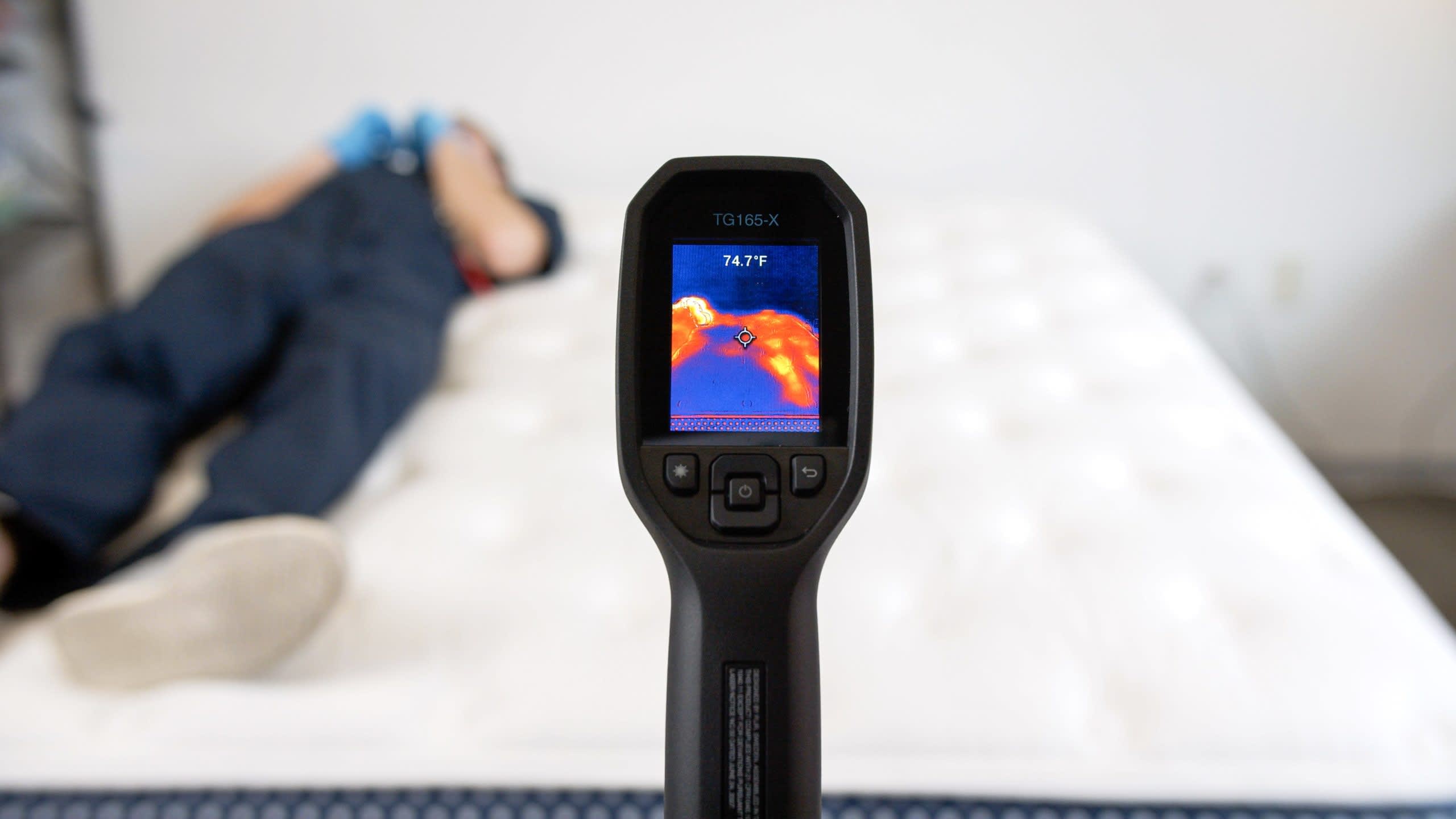
Edge Support
While many hybrid models have sturdy edges, the WinkBed’s perimeter is exceptionally strong . Thanks to extra reinforcement along the edges, our testers noticed minimal compression when sitting along the edge. Most sleepers should feel secure enough to sleep or sit on the full surface of the mattress without worrying about rolling off.The edge of the Softer model may not seem quite as sturdy as the Luxury Firm, Firmer, and Plus versions, due to its plusher design.
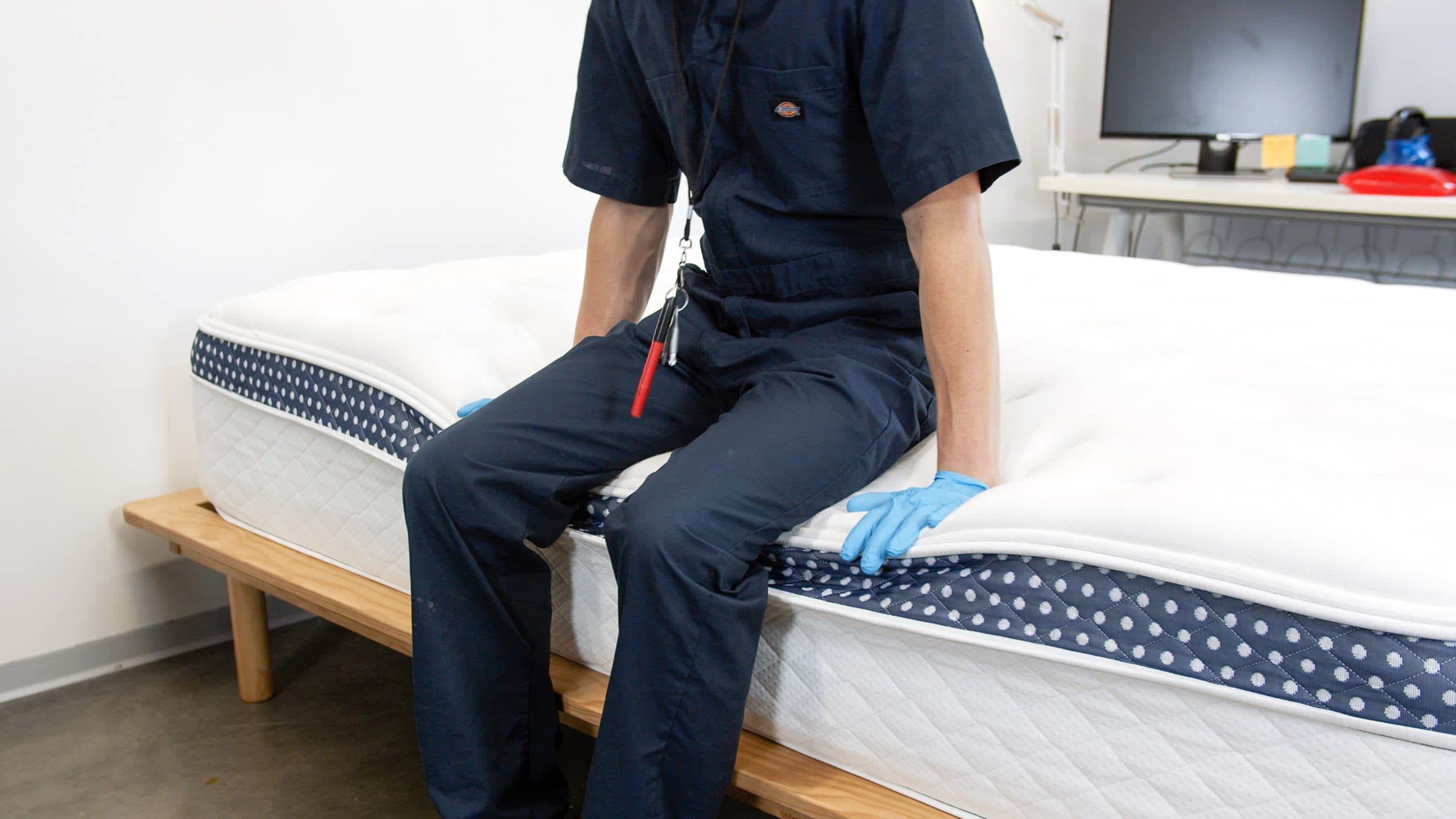
Ease of Movement
The three softest versions of the WinkBed Mattress feature polyfoam comfort layers. Polyfoam is more responsive than memory foam, so the WinkBed won’t hug your body as closely as hybrid mattresses made with close-conforming memory foam. The result is strong ease of movement across the surface.The Plus model features a very responsive latex layer, so this option shines when it comes to ease of movement.
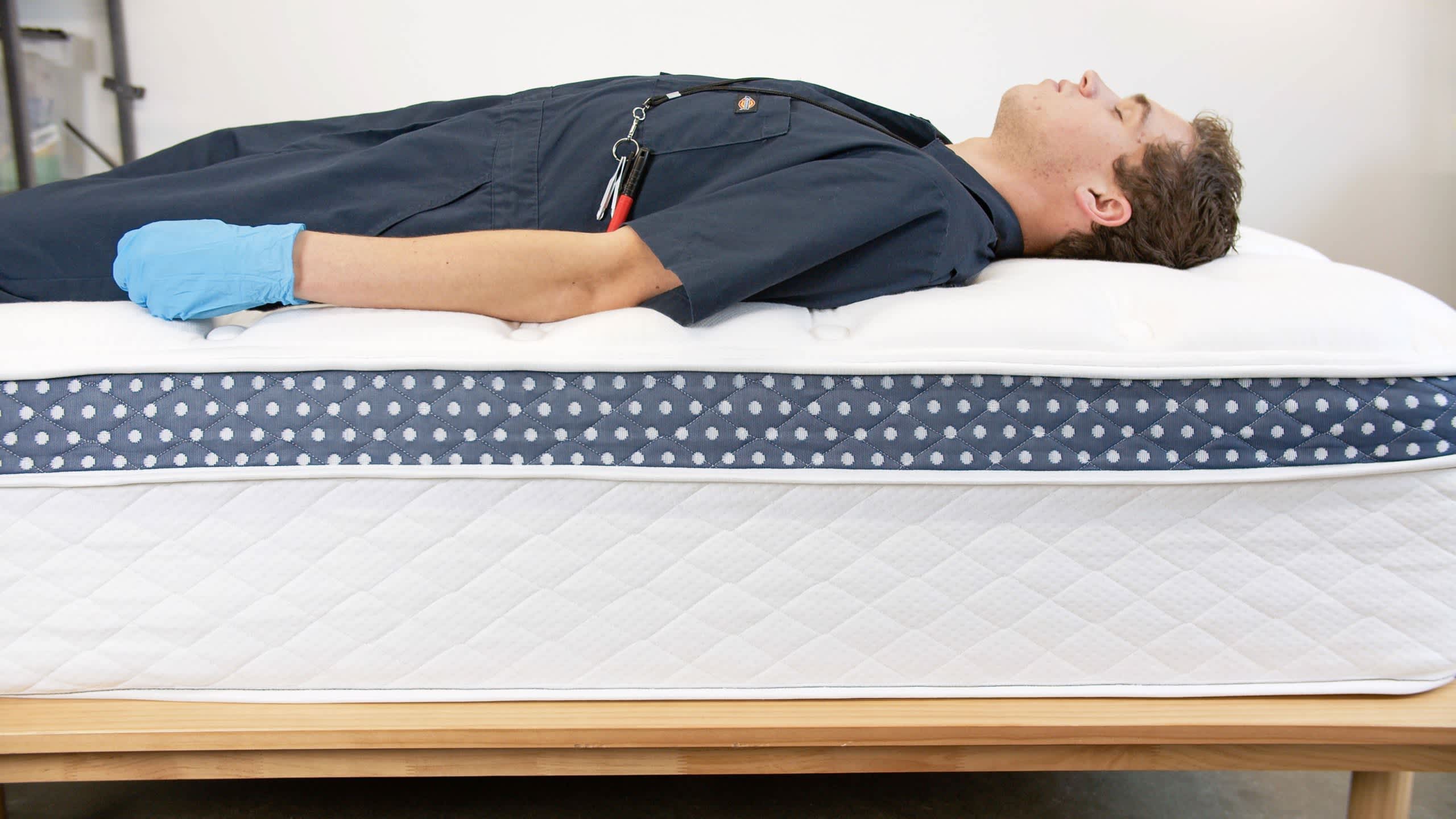
Durability
As a hybrid mattress with a polyfoam comfort layer, the Winkbed should last slightly longer than the average bed. Hybrids tend to be durable because the inner coils last a long time, and polyfoam is more durable than memory foam. That being said, the foam comfort layer isn’t too thick on the Winkbed (2 to 2.5 inches, depending on the firmness you choose), so you might find the bed getting less comfortable after around eight or nine years when impressions and sagging start to set in.
Full Breakdown
The WinkBed is a foam hybrid available in four firmness levels. This diversity ensures most people who weigh less than 130 pounds will find a design that feels comfortable. Thoughtful construction and a sturdy support core have made the mattress a strong performer across different categories of our hands-on testing.
How It Performed
We’ve tested all four of the WinkBed’s firmness levels in our lab. The Softer WinkBed – a medium soft (4) model – was popular among our side and back sleepers in this weight range. The lightweight back and stomach sleepers on our team also awarded favorable ratings to the Luxury Firm WinkBed, which is medium firm (6). If you sleep best on ultra-supportive mattresses, then the Firmer WinkBed (7) or WinkBed Plus (8) might be more in line with your personal preferences.
Edge support and ease of movement are two areas where the WinkBed excelled. The zoned coils protect the edges from sinkage and minimize sinkage, allowing you to move from the perimeter to the middle of the mattress without feeling trapped or stuck. A breathable cover and steady air circulation through the coil layer also helps the mattress sleep cool.
Construction Breakdown
The WinkBed’s Softer (4), Luxury Firm (6), and Firmer (7) models all share similar designs, beginning with a layer of adaptive polyfoam quilted into the cover. The foam contours to the body without the “hugging” sensation some people dislike about memory foam. A polyfoam transitional layer provides additional cushioning while serving as a buffer between your body and the support core, which contains pocketed coils. The coils are divided into different zones based on gauge, or thickness, to reinforce the midsection and gently cradle lighter areas of the body. Additional zoning around the perimeter helps ensure sufficient pushback when you sleep near the edges or get in and out of bed.
The WinkBed Plus (8) swaps out the transitional polyfoam for a layer of latex, giving this model a much more responsive and bouncy feel than its counterparts. The latex is designed with seven different zones to create enhanced support for the torso and hips. The Plus is specifically designed for people who weigh at least 230 pounds. All versions of the WinkBed are encased in a cover made of moisture-wicking Tencel fabric derived from eucalyptus.
The WinkBed and WinkBed Plus are competitively priced for hybrid models, though the latter is slightly more expensive. Customers in the contiguous U.S. receive free ground shipping with their order. WinkBeds backs each purchase with a generous trial and exchange policy. If you aren’t satisfied with your initial firmness selection, you may exchange the original mattress for a replacement model at no extra cost. Owners also receive lifetime warranties against structural defects in the mattress.
Read Our Full WinkBed ReviewBest Mattress for Pressure Relief
8.5 /10 Test Lab Score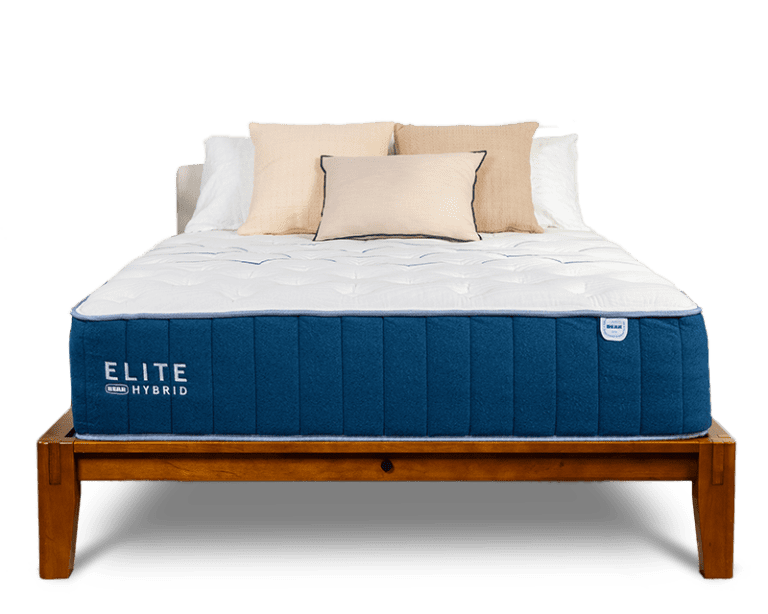
Bear Elite Hybrid
A close-conforming memory foam hybrid offering great pressure relief.
Key Details
- Who It’s Best For: People who struggle with frequent shoulder, lower back, or hip pain.
- Feel: Available in medium (5), medium firm (6), and firm (8) designs.
- What It’s Made Of: A copper-infused memory foam comfort layer, followed by five-zone transitional polyfoam, pocketed coils with perimeter reinforcement, and high-density base foam.
- What We Don’t Like: Initial off-gassing odor can be strong and unpleasant for the first few nights after unboxing.
Scoring & Reviews
The following ratings show how suitable this mattress is for different sleeping positions and sleeper weights. These scores are determined by how well the mattress supports and relieves pressure for each sleeper type.
In addition to the hands-on feedback from our team, we conduct a number of quantitative tests in our Test Lab. The below ratings are based on the experience of our testers.
SELECT AN ICON TO VIEW DETAILS:
Motion Isolation
The Bear Elite Hybrid shows considerable ability to prevent vibrations from traveling across the surface of the mattress. Its memory foam layer only reacts where weight is directly applied, which helps keep movement from causing ripple effects that spread to the other side of the bed.However, the bounce of the coils can cause some motion transfer, especially on the firm model that has a reduced amount of contouring.
Pressure Relief
The Bear Elite Hybrid offers excellent pressure relief that stems from its comfort system and the zoned, pocketed coils in its support core. In our testing, it was side and back sleepers who tended to get the best pressure relief and support. That said, stomach sleepers liked the firm (8) model that maintained a flat, stable surface with just enough cushioning for the midsection.
Temperature Control
This mattress doesn’t feel overwhelmingly hot, but it also probably shouldn’t be the top choice for hot sleepers. The copper-infused foam makes it slightly cooler than some other memory foam mattresses, but heat can still collect in and around the foam. The risk of overheating is highest on the Luxury Plush model because it has the closest contouring around the skin, which may make it harder for heat around the body to dissipate during the night.
Edge Support
Reinforced edges in the support core help give this mattress a solid rating for edge support. While you’ll notice foam compression around the perimeter, it’s not so significant that you’ll feel like the mattress is giving out beneath you.Of the three different firmness options, edge support is clearly strongest in the firm (8) model and weakest in the one with a firmness level of medium (5).
Ease of Movement
When you need to switch your sleeping position or adjust your body’s alignment on the mattress, you generally won’t encounter much resistance. Sleepers over 230 pounds may find that there’s less ease of movement, especially on the softer models. But in most cases, the springiness from the thick layer of pocketed coils enables relatively easy movement on the surface of the Bear Elite Hybrid.
Durability
The Bear Elite Hybrid Mattress scores above average for durability thanks to its pocketed coils, reinforced perimeter, and memory foam and polyfoam layers. The mattress comes in three firmness levels, and going firmer will typically extend the life of the mattress a bit more. Overall, you should expect around seven to eight years of use.
Full Breakdown
Lightweight sleepers who live with frequent or chronic pain should choose a mattress that contours closely, promotes even alignment, and reduces pressure buildup in the shoulders, lumbar region, and hips. The Bear Elite Hybrid features an adaptive comfort layer, zoned transitional support, and robust coils to push back against extra weight in your midsection and keep your entire body on a level plane. This design helps ensure a soothing, pressure-free sleep experience.
How It Performs
The Bear Elite Hybrid is available in three firmness levels. Our team’s hands-on testing shows most sleepers under 130 pounds will prefer the softest option, which is medium, or a 5 out of 10 on our 10-point firmness scale. On this model, you’ll notice the memory foam conforming closely to your figure to form a pressure-relieving cradle that helps promote even spinal alignment. People who weigh 130 pounds or more may need more support from their mattress, but those under 130 pounds can benefit from this deep cushioning and contouring.
Motion isolation is a key strength of the Elite Hybrid. Despite the coils, which produce some bounce, the foam layers absorb movement well and prevent motion from transferring to the other side of the bed – a major benefit for couples. We also found that the mattress doesn’t retain too much heat. A breathable cover and cooling infusion in the top layer help the surface stay cool, while the coils generate airflow throughout the interior.
Construction Breakdown
The Elite Hybrid features a four-layer design, beginning with a layer of memory foam to cushion the surface. Cooling gel infused in the foam is intended to dissipate heat away from your body. Transitional foam divided into five firmness zones pushes back against your torso and hips while cradling your head and legs.
Pocketed coils and dense base foam make up the support core. The perimeter coils are reinforced to prevent excessive compression when you lie close to the edges of the mattress or get in and out of bed. A cover made from Celliant, a fabric engineered to capture and release body heat, encases the entire mattress.
Trial, Shipping, and Warranty
Bear offers free ground shipping to shoppers in the contiguous U.S. The Elite Hybrid comes with a 120-night sleep trial, and you may return the mattress for a refund after sleeping on it in your own bedroom for at least 30 nights. Your purchase is also backed by a lifetime warranty against structural and material defects.
Read Our Full Bear Elite Hybrid ReviewBest Mattress for Side Sleepers
9.2 /10 Test Lab Score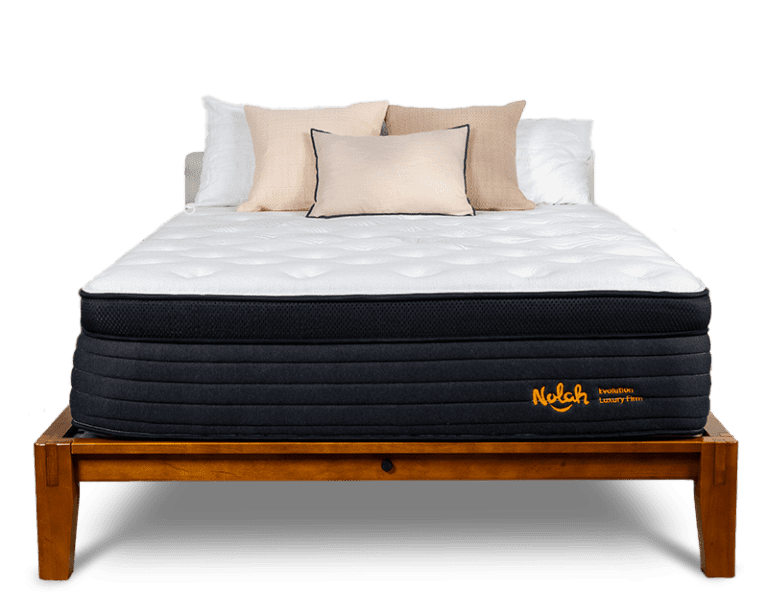
Nolah Evolution 15
A cloud-like experience with a plush euro-top in multiple firmnes options.
Key Details
- Who It’s Best For: Side and back sleepers under 130 pounds, as long as they choose the medium (5) design.
- Feel: Three firmness options available, including a plush and adaptive medium design that’s best suited to sleepers under 130 pounds.
- What It’s Made Of: Four individual foam layers in the comfort system, followed by multi-zone pocketed coils with perimeter reinforcement.
- What We Don’t Like: High profile requires a deep-pocket fitted sheet and returns incur a $99 fee.
Scoring & Reviews
The following ratings show how suitable this mattress is for different sleeping positions and sleeper weights. These scores are determined by how well the mattress supports and relieves pressure for each sleeper type.
In addition to the hands-on feedback from our team, we conduct a number of quantitative tests in our Test Lab. The below ratings are based on the experience of our testers.
SELECT AN ICON TO VIEW DETAILS:
Motion Isolation
Thanks to its thick polyfoam layers, the Nolah Evolution 15 Hybrid absorbs enough movement to prevent most sleep disruptions. However, there is still some motion transfer because of the bounciness of the coils. You can expect the most motion transfer on the firm (8) model and the least on the plush (5) option. Across the board, though, our testers noticed only light motion transfer across all three firmness levels.
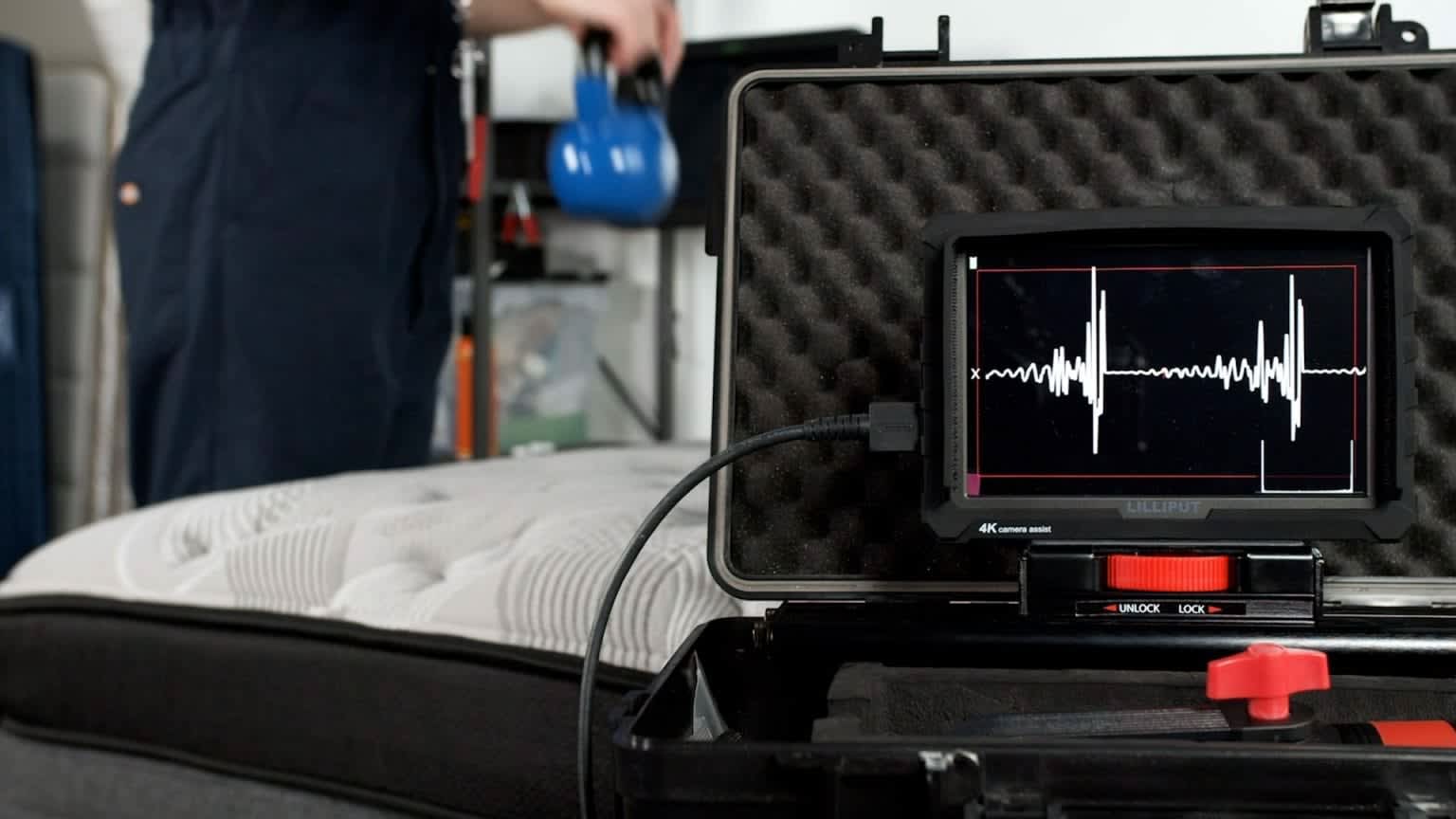
Pressure Relief
The combination of zoned coils and multiple polyfoam layers, including zoned AirFoam, enable the Nolah Evolution Hybrid to cushion pain points and provide above-average pressure relief. Choosing the right firmness option can optimize pressure relief. While individual preferences vary, a plush (5) or luxury firm (6) model works best for most side sleepers under 230 pounds, while the luxury firm (6) or firm (8) are better suited to the majority of back and stomach sleepers.

Temperature Control
Like many hybrids, the Nolah Evolution 15 excels at temperature regulation. Cooling fibers in the cover are engineered to draw heat away from the body, and the aerated polyfoam layers help reduce heat retention. The coil layer also promotes steady ventilation.In our testing, all three models resisted heat retention. That said, compared to the firm (8) model, the plush (5) and luxury firm (6) permit more sink and allow slightly less cooling airflow around the skin.
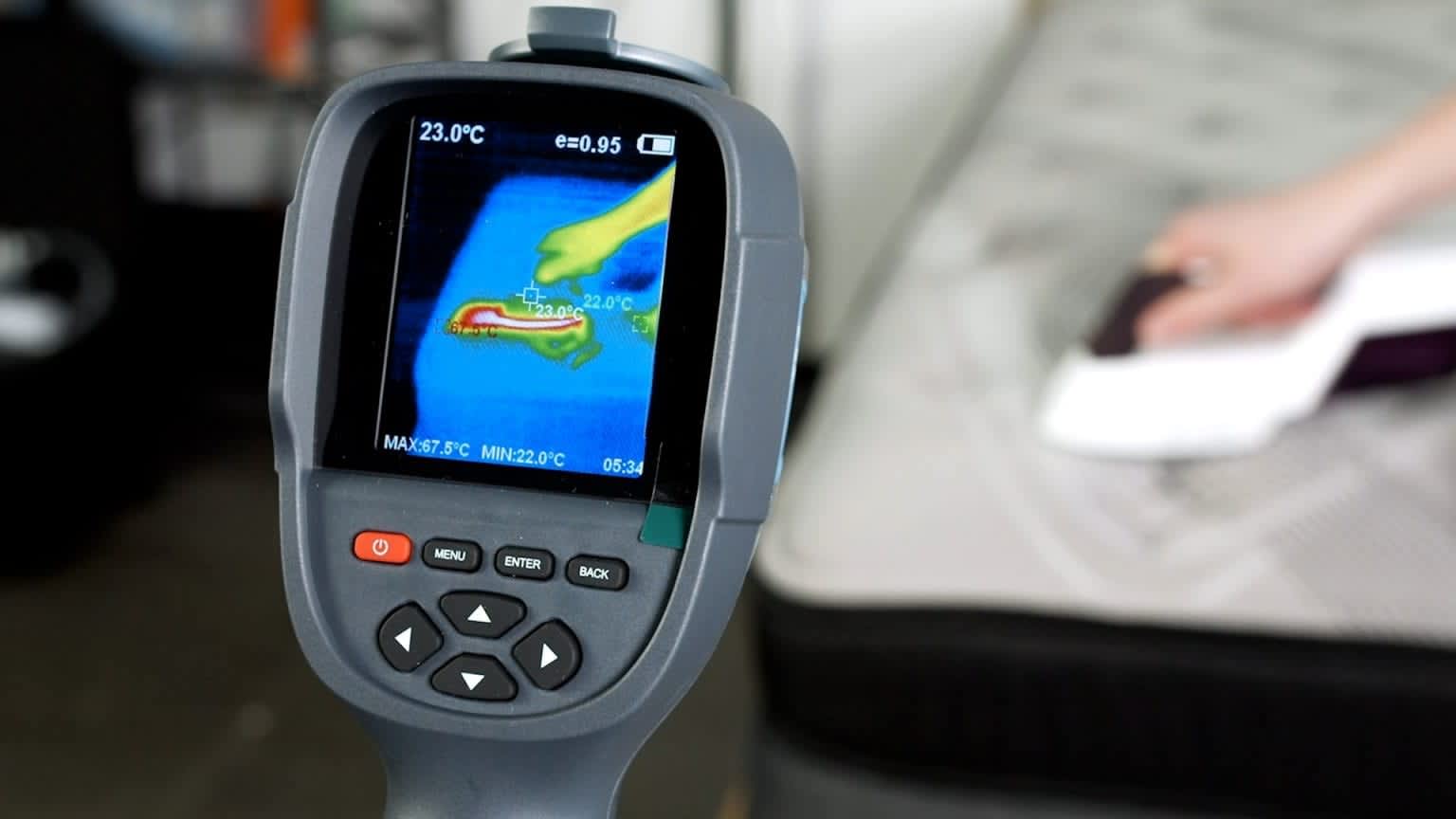
Edge Support
The sturdy 8-inch coils gives the Nolah Evolution Hybrid a reliable level of edge support. While there can be some sink from the foam layers, resilient polyfoam prevents instability around the perimeter of the bed.Edge support does vary based on the firmness level. Our team noticed a reduction in edge support between the firm (8) and the luxury firm (6) and plush (5) models. Even on the softer models, though, you get solid edge support from this mattress.
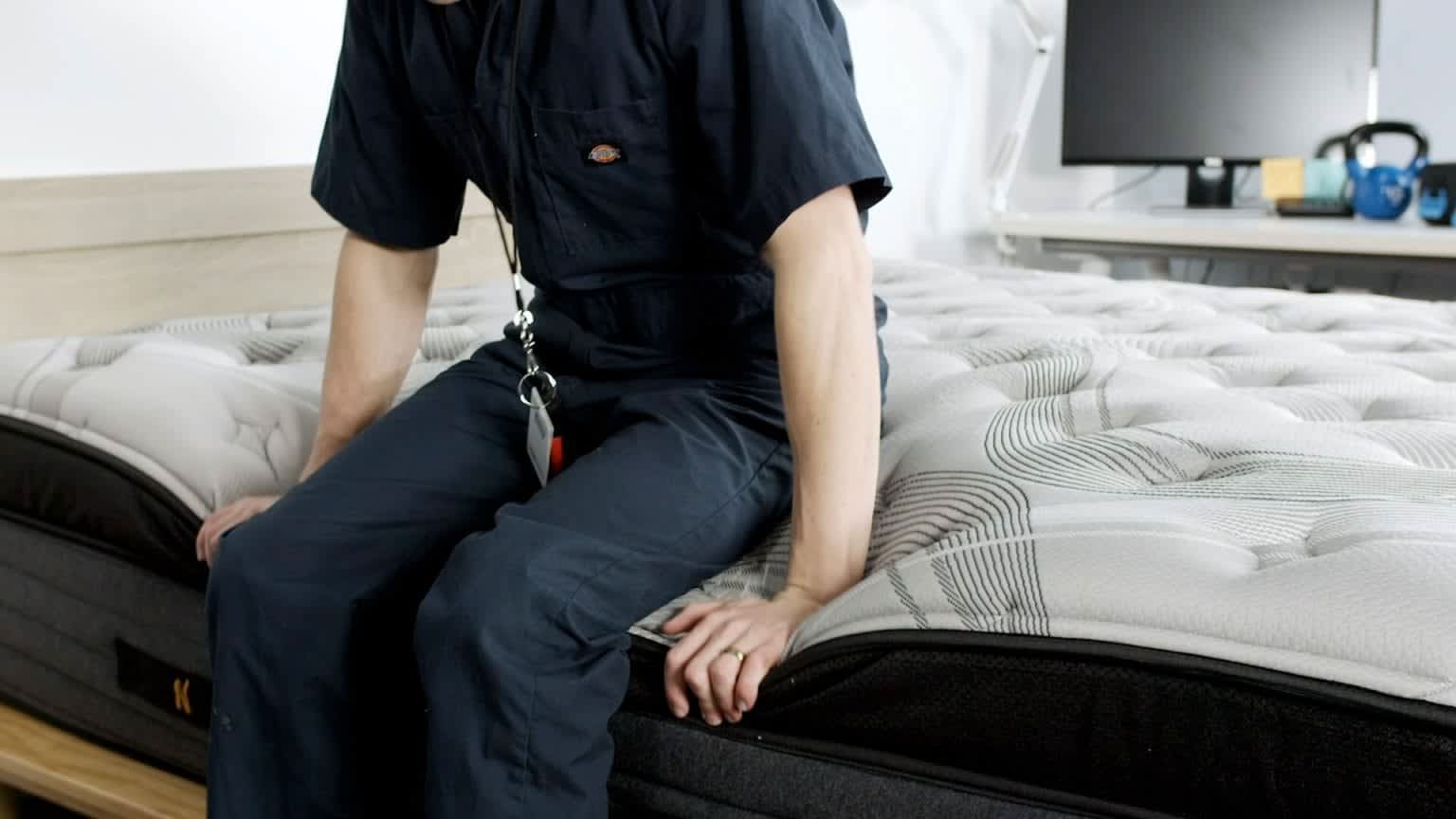
Ease of Movement
The Nolah Evolution 15’s foam layers don’t sink or hug excessively, and the bounce of the coils facilitates movement on the surface. This makes this mattress a solid fit for combination sleepers or anyone who hates feeling stuck in place when lying in bed. With its softer surface, the plush (5) model restricts movement a bit more than the other two. The firm (8) model provided standout ease of movement to all of our sleepers.
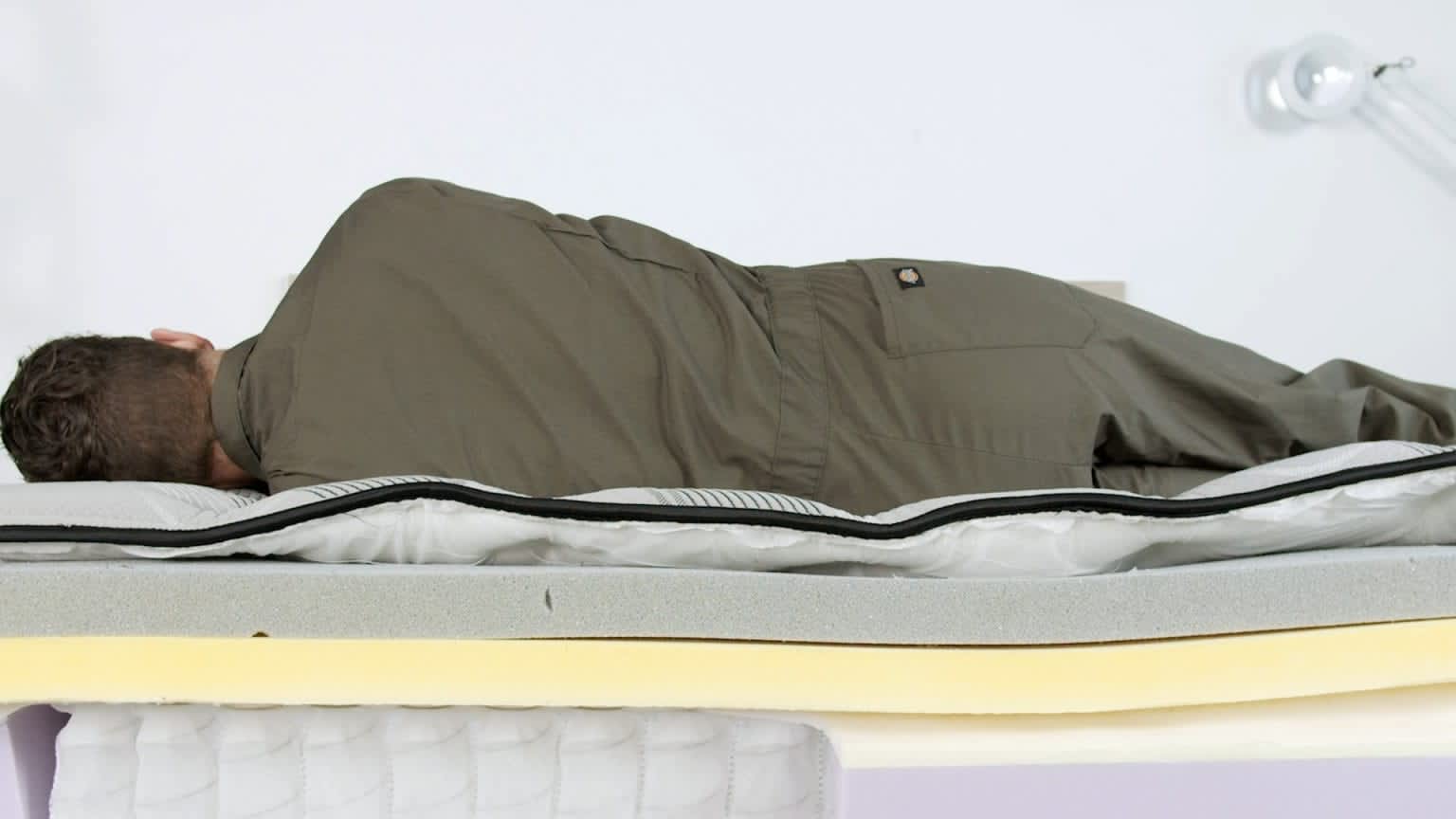
Durability
With a stunning 15-inch profile, seven inches of which are polyfoam found in the comfort layer, the Nolah Evolution 15 is a highly durable mattress. Beneath that are 8-inch coils to give the bed more support. If longevity is your main concern, going with the firmer of the three options may extend the life a bit more. Otherwise, you can generally expect around eight or nine years of comfort.
Full Breakdown
The Nolah Evolution 15’s foam comfort system and luxurious Euro-top excel offer an exceptionally plush and comfortable feel, and the breathable materials regulate temperature year-round. The Evolution 15 comes in three firmness options – medium (5), medium firm (6), and firm (8) – with the medium feel performing best among sleepers under 130 pounds.
How It Performed
The medium feel proved highly comfortable for side and back sleepers under 130 pounds, but the medium firm model is also a strong option for back sleepers in this weight category. A plusher feel should allow these sleepers to comfortably sink into the mattress, while foam comfort layers contour the body to relieve pressure buildup.
Thanks to a responsive feel and high marks in edge support and ease of movement, all three models performed well in the sex category. Couples should move freely across the whole mattress without excessive sinkage. The breathable materials also help regulate temperature for couples. Co-sleepers who value motion isolation may want to opt for the medium feel, which absorbs more movement transfer to prevent sleep interruptions.
Construction Breakdown
A cover made from proprietary ArcticTex fabric encases the mattress, and is meant to keep the surface cool. The mattress contains a layer of polyfoam quilted into the Euro-top that provides a plush initial feel. The comfort system also includes a layer of graphite-infused polyfoam. This layer cradles the body to relieve pressure, while the graphite is engineered to conduct heat away from the body.
Next is a polyfoam transitional layer that evenly distributes your weight and keeps you from sinking too much. The support core features pocketed coils, which are reinforced in the center to support the midsection and around the perimeter to protect the edges from sinkage. The coils rest on a base layer made from plant-based fiber for extra stability. The bottom half of the encasement has handles so you can easily move the mattress.
Nolah ships free to the contiguous U.S. Shoppers have the option to opt out of the 120-night sleep trial for a discount of up to $160. Nolah Evolution 15 purchases are also backed by a lifetime warranty.
Read Our Full Nolah Evolution 15 ReviewBest Mattress for Combination Sleepers
8.4 /10 Test Lab Score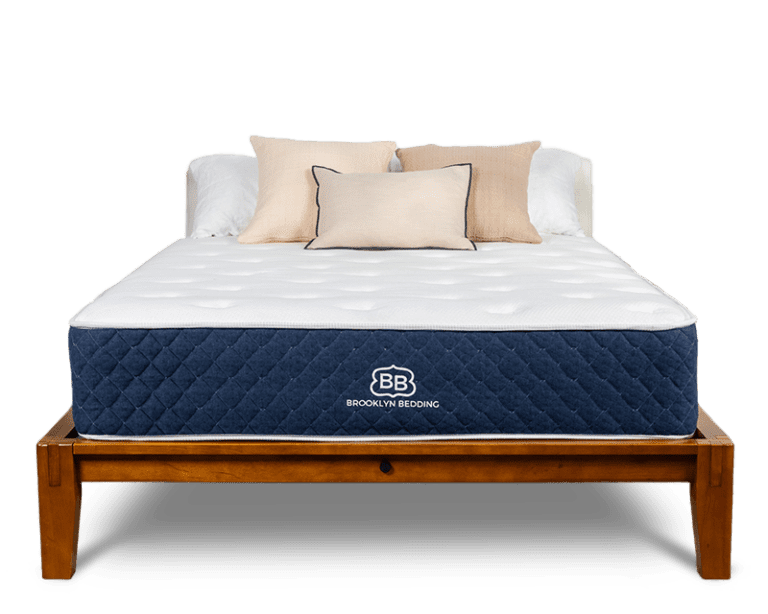
Brooklyn Bedding Signature Hybrid
A high-quality, affordable hybrid with multiple firmness options.
Key Details
- Who It’s Best For: Lightweight shoppers with limited budgets.
- Feel: Three firmness options are available. For sleepers under 130 pounds, the medium soft (4) design will probably feel most comfortable – though some back and stomach sleepers may feel more comfortable on the medium firm (6).
- What It’s Made Of: A comfort system with two adaptive polyfoam layers over a support core of pocketed coils.
- What We Don’t Like: Firmness exchanges are not allowed during the sleep trial and returns incur a $99 fee.
Scoring & Reviews
The following ratings show how suitable this mattress is for different sleeping positions and sleeper weights. These scores are determined by how well the mattress supports and relieves pressure for each sleeper type.
In addition to the hands-on feedback from our team, we conduct a number of quantitative tests in our Test Lab. The below ratings are based on the experience of our testers.
SELECT AN ICON TO VIEW DETAILS:
Motion Isolation
The Signature isolates motion fairly well. Many hybrid models feel more responsive on the surface, and this can generate more motion transfer when someone changes positions or gets in and out of bed.The Signature’s thick foam layers absorb movement to eliminate a great deal of transfer. You may still notice some ripples of transfer across the surface on the medium soft and medium firm models. For the firm Signature, the transfer will be more noticeable.
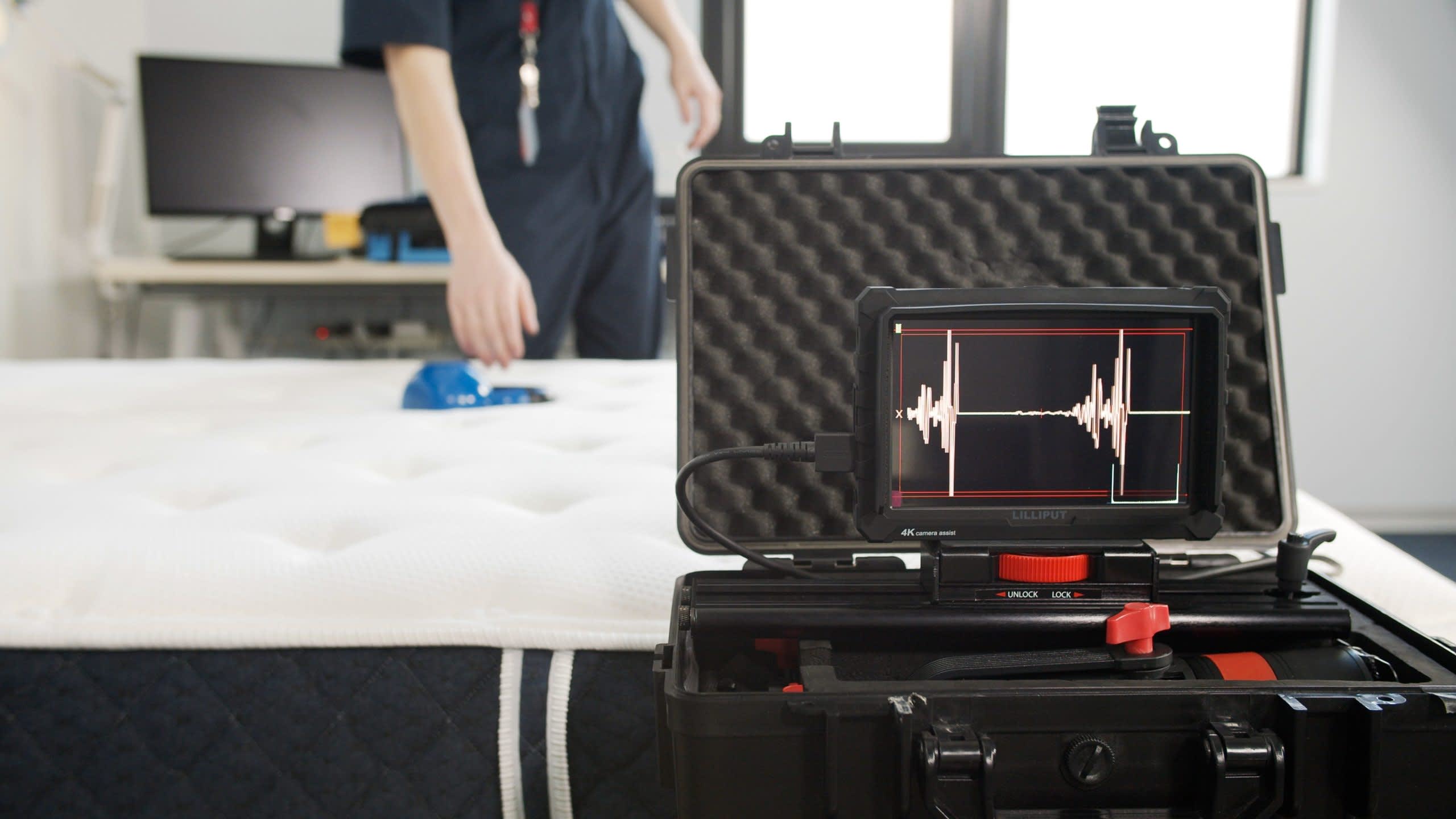
Pressure Relief
All three of the Signature’s firmness levels offer great pressure relief. The most comfortable option for you depends on your sleep position and body type.The medium soft model reduces pressure for side sleepers with extra cushioning the shoulders and hips. The medium firm feel is more supportive for back sleepers up to 230 pounds. You won’t sink too much, but the foam still conforms and relieves pressure. Those over 230 pounds and stomach sleepers should consider the firm model.
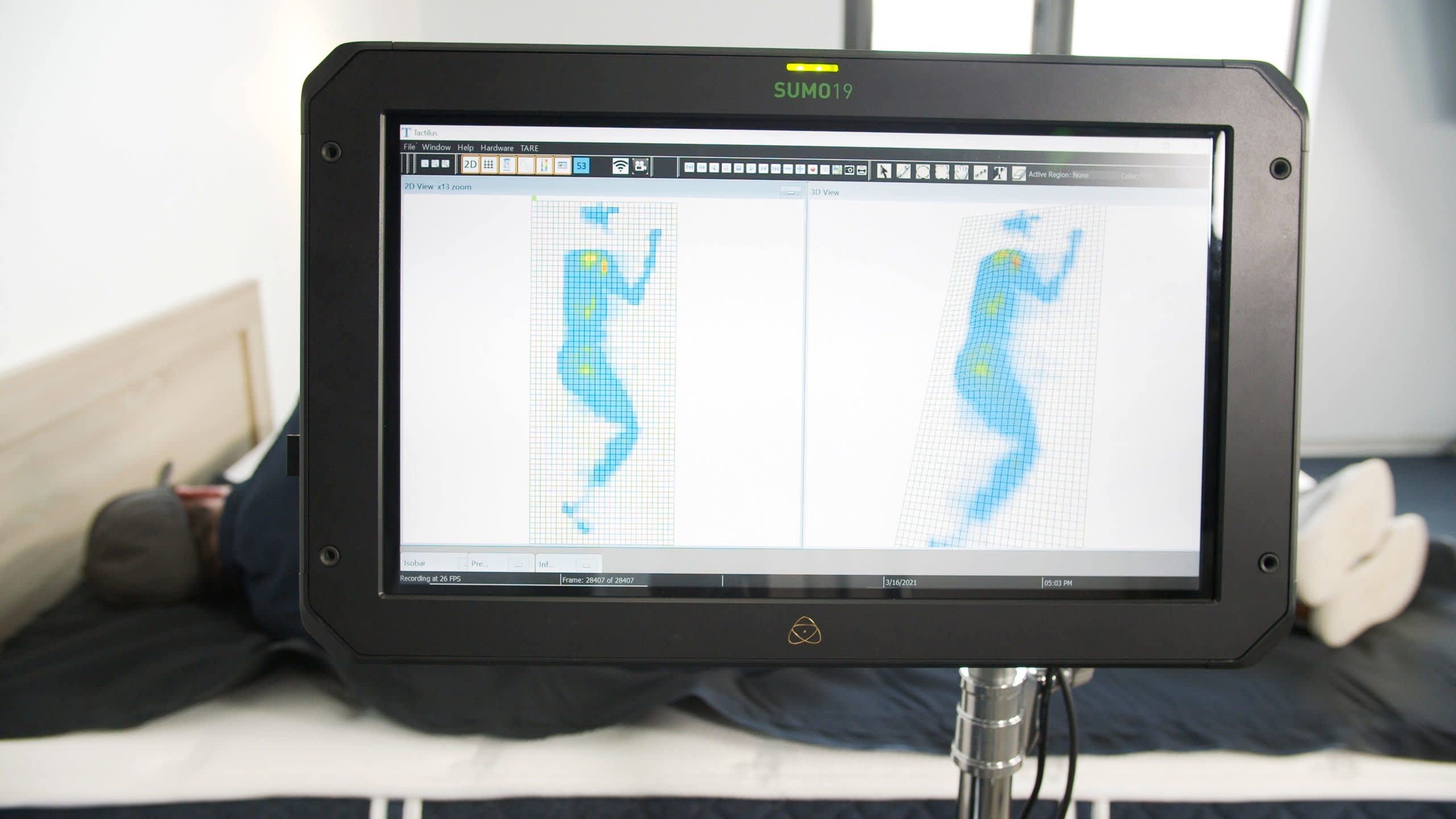
Temperature Control
The Signature’s coil system promotes airflow to maintain a comfortable temperature. The TitanFlex foam is also quite breathable compared to foams found in other hybrids.The firm model provides the best temperature control because it sinks very little and you’ll feel more surface airflow. The medium soft and medium firm models conform more closely. Hot sleepers may feel a bit too warm on these models – but for most, the mattress should sleep cool regardless of selected firmness.
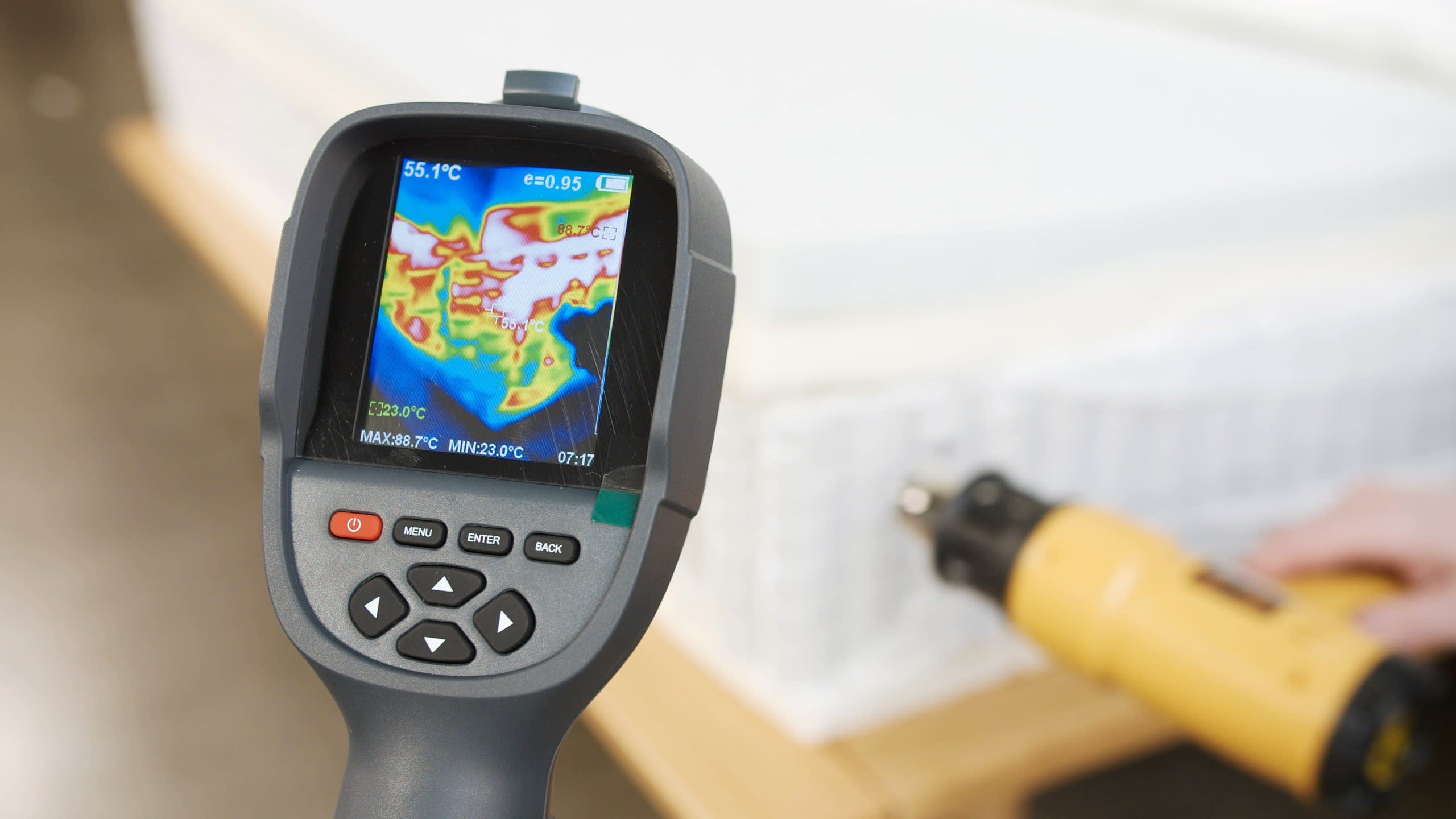
Edge Support
Hybrids generally excel at edge support, and the Signature is no exception. Coil support cores reinforce the perimeter better than latex or foam. This means less sinkage when you get on and off the mattress, and more stability if you like sleeping near the edges.The medium soft and medium firm models sink more than the firm because the foam conforms more closely, but they still maintain good overall stability if you weigh 230 pounds or less.
Ease of Movement
Polyfoam can be a responsive material, but the Signature’s latex-like TitanFlex foam is exceptionally bouncy. This allows you to move across the mattress rather easily. You won’t sink into the bed as you might on a mattress with memory foam.That said, the medium soft Signature can hinder movement on the surface. This model conforms the closest, so you’ll feel more sinkage when moving between the bed’s edges and interior. The medium firm and firm models provide more bounce-back.
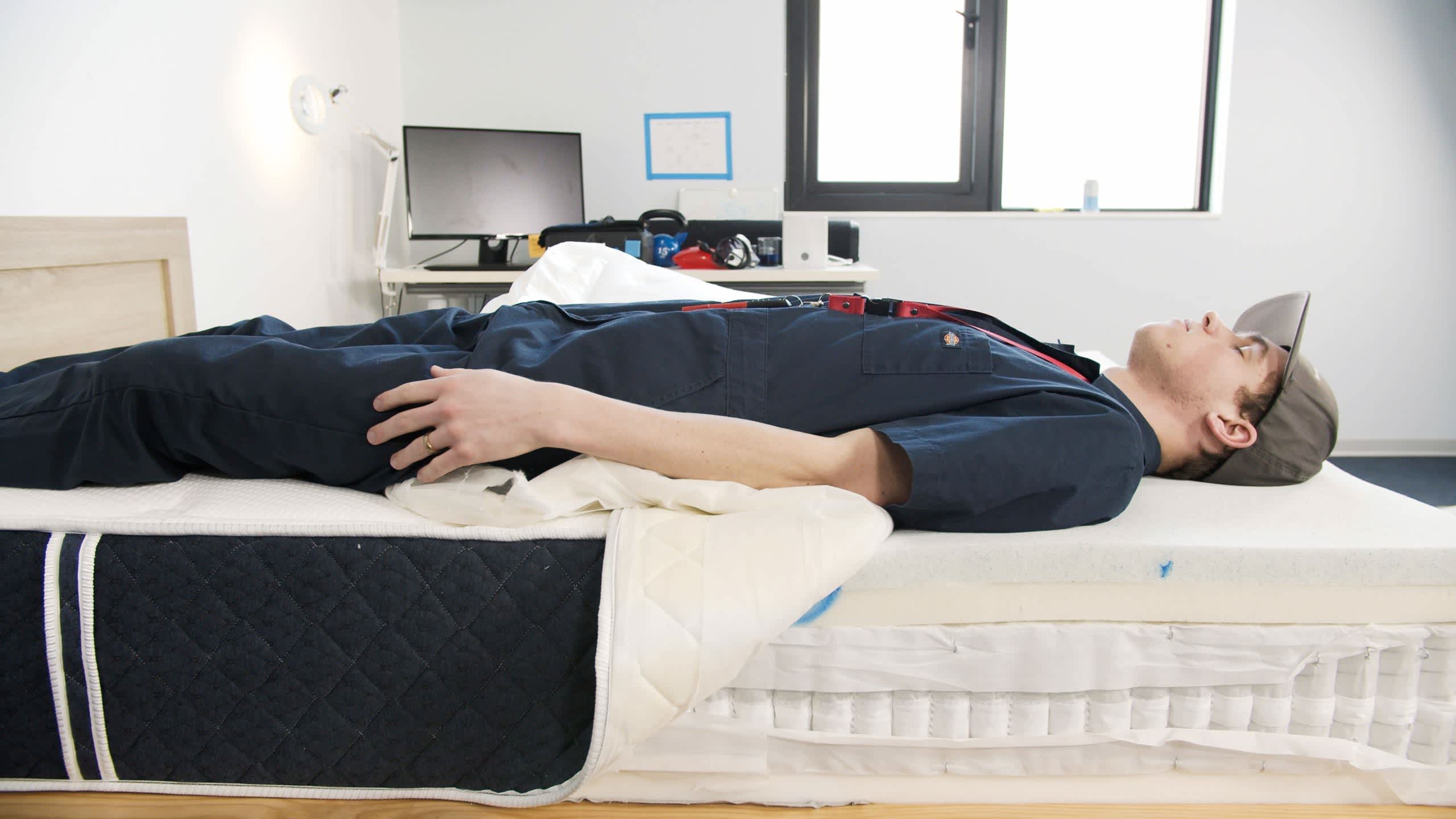
Durability
The Brooklyn Bedding Signature Hybrid has an estimated lifespan of six to seven years. As with other hybrids, the pocketed coils provide a solid base that evenly distributes pressure to prevent excessive strain on any one area. The most vulnerable part of the mattress is the comfort system, particularly the quilted top. The softer foams used in the mattress’ top layers may eventually develop imprints that affect the cushioning, something that’s more prominent in the softer model.
Full Breakdown
No mattress is “universally comfortable,” but the Brooklyn Bedding Signature Hybrid comes closer than most thanks to its wide firmness selection. You can choose from medium soft (4), medium firm (6), and firm (8) designs, all with distinct contouring levels. Below-average prices also make the mattress a great deal for value seekers.
How It Performed
Our tests show the medium soft option is best suited to lightweight side sleepers, whereas the lighter back and stomach sleepers on our team preferred the medium firm, but you should consider the firm model if you need extra support to sleep comfortably. The two softest designs earned favorable ratings for pressure relief and motion isolation. If edge support and ease of movement are high priorities, we recommend the medium firm or firm models.
Construction Breakdown
All three Signature Hybrids begin with comfort layers of TitanFlex polyfoam, a proprietary material that conforms to the body without the deep hug of memory foam. VariFlex transitional foam provides extra cushioning while acting as a barrier between your body and the support core, which contains pocketed coils and high-density base foam. A breathable cotton cover encases the mattress.
For an additional fee, you can add a “Cloud Pillow Top” to your Signature Hybrid. This extra foam layer makes the surface feel noticeably plusher, and a GlacioTex phase change cover creates bursts of cooling. We recommend this add-on if you’re an exceptionally hot sleeper. The Cloud may also be useful if you struggle with night-to-night aches and pains in your shoulders, lumbar region, or hips.
The Signature Hybrid is available in 14 different sizes. These include standard mattress dimensions, a split California king for couples with adjustable beds, and several RV options. All are affordably priced compared to the average hybrid. Standard ground shipping is free of charge for all orders in the contiguous U.S. Your sleep trial runs for 120 nights, and those who decide to keep their mattress also receive 10-year manufacturer’s warranties. Please note firmness exchanges are not allowed during the trial period.
Read Our Full Brooklyn Bedding Signature Hybrid ReviewBest Mattress for Couples
8.4 /10 Test Lab Score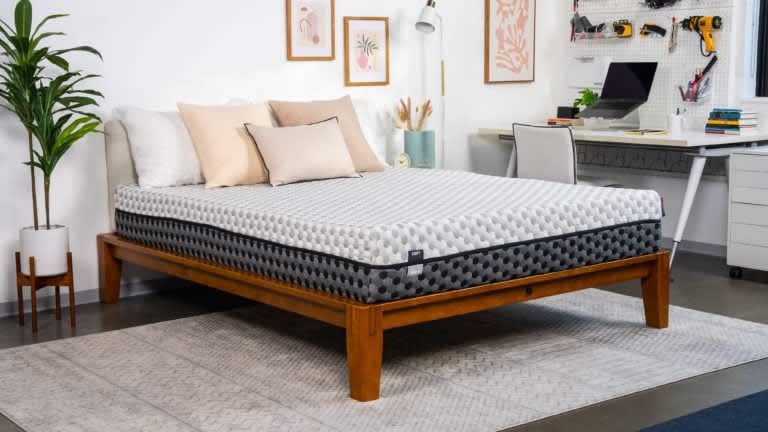
Layla Memory Foam Mattress
The gold standard of dual-sided mattresses with a pleasant memory foam feel.
Key Details
- Who It’s Best For: People who enjoy the cushiness of memory foam but also run hot.
- Feel: Flippable construction with a different firmness on each side. Vast majority of people under 130 pounds will prefer the medium soft (4), but the opposite surface is firm (7) for those who prefer less contouring.
- What It’s Made Of: Each side’s comfort system contains gel-infused memory foam and zoned transitional polyfoam. Shared pocketed coil support core is located in the middle.
- What We Don’t Like: Strong off-gassing odor for the first few nights.
Scoring & Reviews
The following ratings show how suitable this mattress is for different sleeping positions and sleeper weights. These scores are determined by how well the mattress supports and relieves pressure for each sleeper type.
In addition to the hands-on feedback from our team, we conduct a number of quantitative tests in our Test Lab. The below ratings are based on the experience of our testers.
SELECT AN ICON TO VIEW DETAILS:
Motion Isolation
Thanks to the memory foam on both sides, the Layla Memory Foam Mattress effectively reduces the amount of vibration that spreads from one side of the bed to the other.That said, in our testing, it was clear that the softer side provided considerably more motion isolation. For couples who want a plush feel that limits motion transfer, the Layla Mattress is a solid fit.
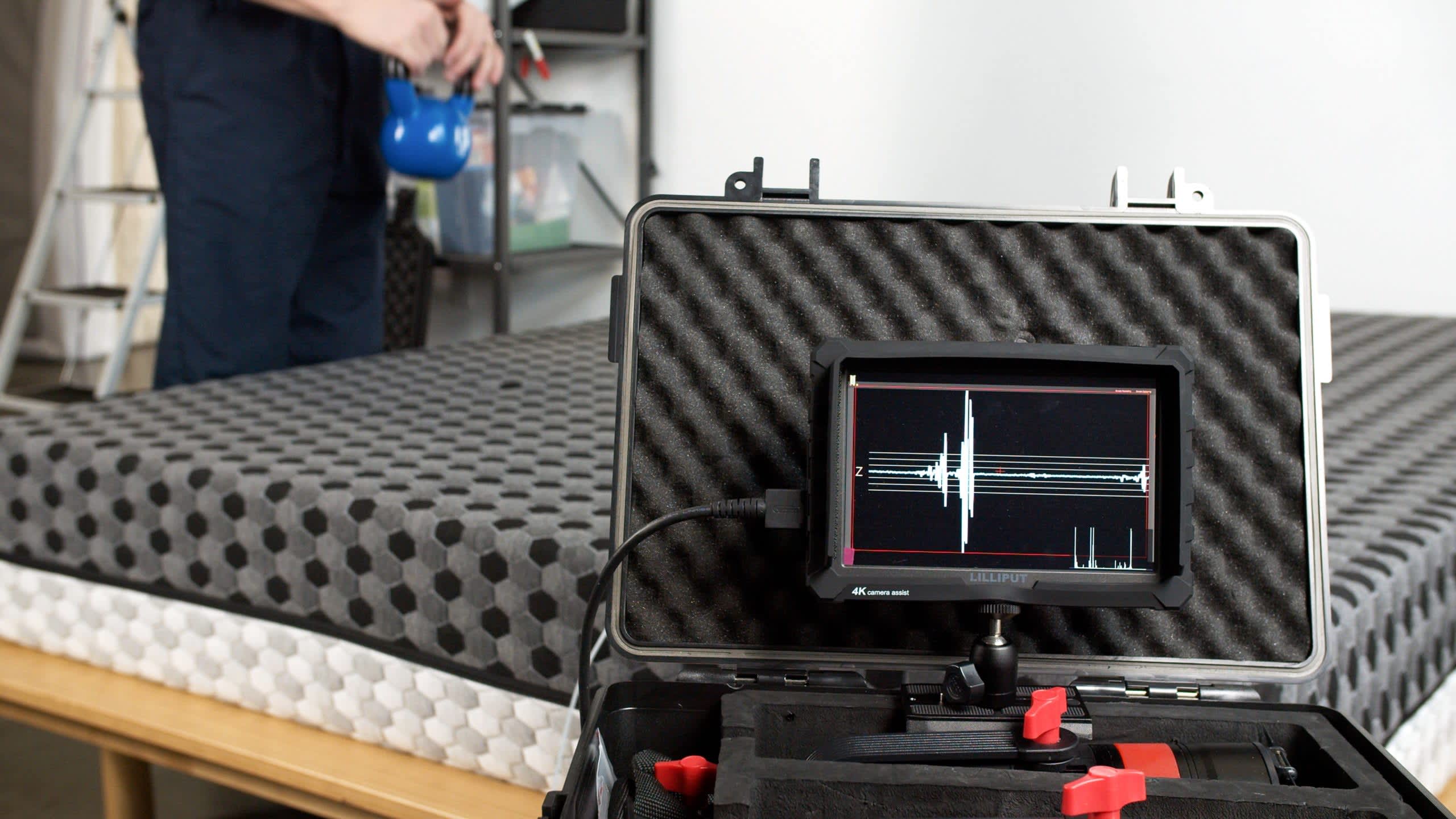
Pressure Relief
Memory foam contours to your hot spots and pain points, giving the Layla Mattress a solid level of pressure relief. However, many sleepers will find that they only get enough support from one of the two sides.For example, the medium soft (4) side is too plush for many sleepers, especially back and stomach sleepers and people over 230 pounds. The firm (7) side is too hard for many side sleepers but can deliver great support to many back sleepers.
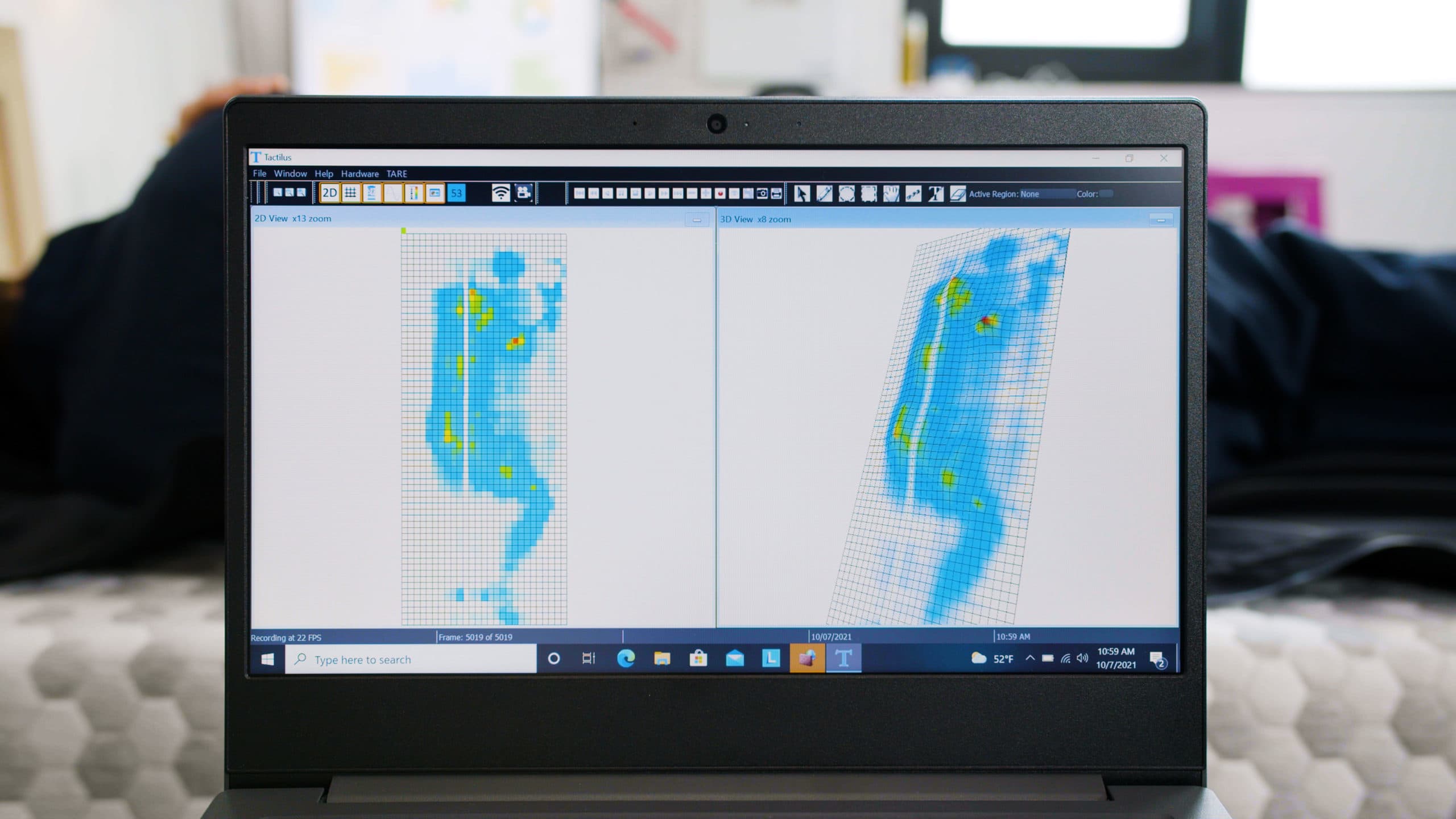
Temperature Control
Heat retention is noticeable but not excessive on the Layla Memory Foam Mattress. With a thinner layer of memory foam, the firm (7) side tends to resist heat buildup far better than the medium soft (4) side.Layla incorporates cooling features like copper-infused and aerated foams to try to enhance temperature regulation, but this mattress may still be too warm for hot sleepers.
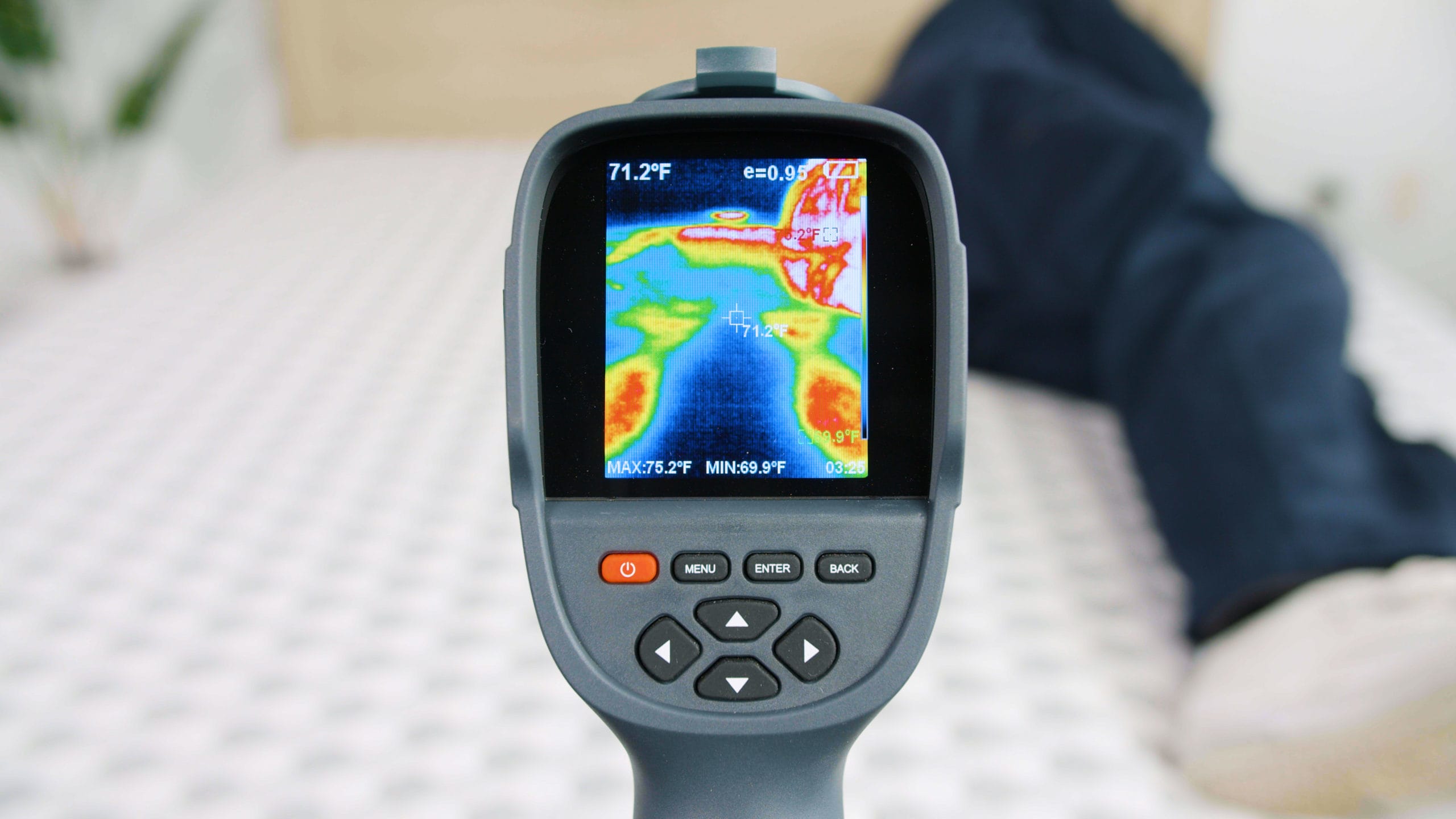
Edge Support
Edge support is one of the weak points of the Layla Mattress. While it doesn’t feel totally unstable, the foam layers are considerably weaker around the edge of the mattress. As you would suspect, there’s more sinkage around the perimeter on the medium soft (4) side.
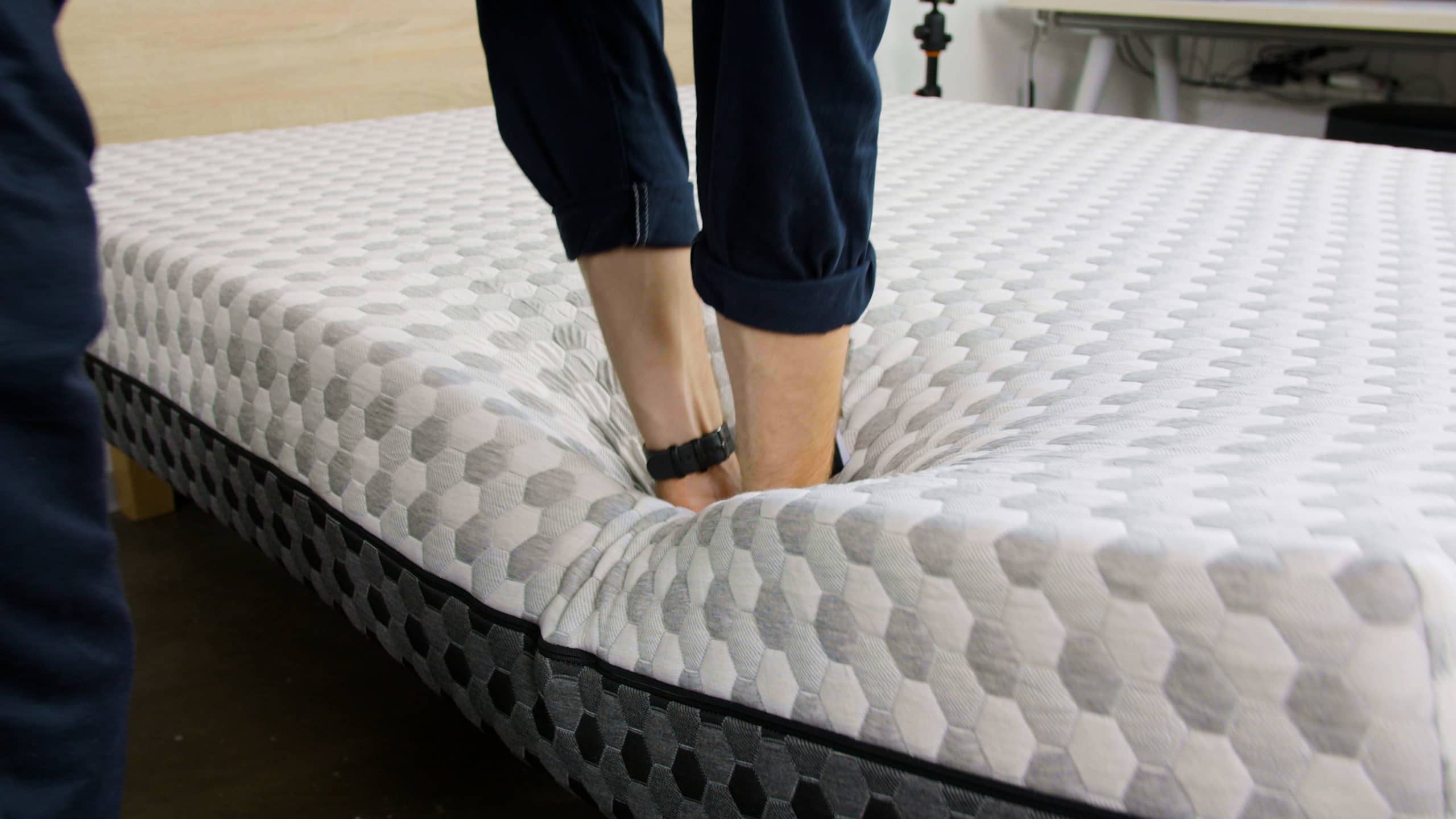
Ease of Movement
The conforming feel of memory foam can impede movement – something all of our testers noticed. With the additional plushness on the medium soft (4) side, it was a struggle to switch sleeping positions. Movement was quite a bit easier on the firm (7) side.For most people, reduced ease of movement isn’t reason enough to pick a different mattress. But it may be a serious issue for combination sleepers or anyone who frequently turns over or adjusts their body’s positioning in bed.

Durability
For an all-foam bed, the Layla Memory Foam mattress has decent durability, but without any coils to add support, it likely won’t last beyond the typcial six- or seven-year mattress lifespan. The construction includes a 3.5 PCF memory foam (which is considered medium density), plus two inches of stronger polyfoam. Sleepers have the option to sleep on the soft or firm side, which can make it more versatile.
Full Breakdown
Couples will probably enjoy the Layla Mattress’ versatility, as well as its motion isolation. People who toss and turn are less likely to wake their partner on the Layla because it absorbs movement, rather than allowing it to move across the bed’s surface. The flippable design also makes it easy for couples to switch between firmness levels according to personal preference.
How It Performed
The flippable Layla Mattress has two distinct feels that lend themselves well to lightweight sleepers of every sleep position. The medium soft side includes foam layers that provide pressure-point relief for side sleepers, while the firm side offers more robust support for back and stomach sleepers. Most foam mattresses in our testing lab tend to trap heat, but the Layla stays quite cool. This makes it a great choice for hot sleepers who like the close body hug of a memory foam mattress.
Construction Breakdown
The medium soft (4) side uses two comfort layers — memory foam infused with copper and cooling gel and zoned polyfoam. The 3 inches of memory foam cradle your body to alleviate pressure points, and the copper and gel are designed to wick away heat. The zoned polyfoam provides enhanced support beneath your midsection and lower back while providing extra cushioning to your shoulders and legs.
The firm (7) side has a 1-inch layer of copper and gel-infused memory foam, offering subtle contouring and acts as a comfortable buffer above the polyfoam support core. The mattress is wrapped in a breathable polyester, rayon, viscose, and poly-lycra blend cover meant to prevent heat retention.
Layla provides free shipping and returns for customers in the contiguous U.S. Shoppers have up to 120 nights to test the mattress. A generous lifetime warranty covers manufacturer defects.
Read Our Full Layla Memory Foam Mattress Review
How Does Body Weight Affect the Support of a Mattress?
Maintaining proper spinal alignment is crucial for a comfortable and pain-free night’s sleep. Ideal support from a mattress will maintain your spine’s natural curvature without allowing your body to sink too deep at the midsection.
Body Weight and Firmness
Both body weight and mattress firmness can affect your spine’s alignment. Your body weight determines the pressure you place on the mattress’s surface. A heavier body requires more support to keep the spine aligned, and a lighter body needs less.
“The surface you sleep on must be appropriately responsive to the pressure created by your body’s weight,” says Brandon Peters, M.D., FAASM, neurologist and sleep medicine specialist. “Too little or too much give and pain ensues.”
It’s often the reverse when it comes to cushioning, though preference also comes into play. Generally, a lighter body requires more cushioning — or a softer mattress — than a heavier body. That’s because lightweight sleepers don’t compress their mattress as much, so a firmer mattress isn’t able to fully adapt to the body’s natural curves.
Body Weight and Sleeping Position
Your preferred sleeping position also factors into how much support you need from a bed. Side sleepers often prefer softer mattresses, as one that’s too firm can cause pressure points in the hips and shoulders. A mattress that’s too soft for stomach sleepers can cause their midsections to sink into the bed. Back sleepers usually enjoy a firmness level in between that adequately supports the lower back.
How to Choose a Mattress for Lightweight Sleepers
There are a number of factors to consider when shopping for a new mattress. Lightweight sleepers should primarily consider whether the support level is appropriate and whether the surface provides adequate pressure relief.
We’ll explore what to look for in a mattress and give you the tools to help determine whether or not a particular model is a good fit for your needs.
Firmness Level
We use a 10-point firmness scale to rank each mattress we review, with 1 being the softest and 10 being the firmest. The majority of sleepers prefer a mattress that falls between 5 and 7 on the firmness scale. However, this is different for lightweight sleepers.
Most lightweight sleepers prefer a softer mattress, as they compress easier than firm mattresses and are less likely to cause pressure points. As a result, many lightweight sleepers enjoy a mattress that falls between 3 and 6 on the firmness scale.
Sleeping Position
Your primary sleeping position will have the greatest impact on which firmness level you choose. Lightweight side sleepers typically prefer a plush mattress, while stomach sleepers prefer one with increased support. Back sleepers typically enjoy a firmness level between the two.
Pressure Relief
While all sleepers can experience pressure points, side and lightweight sleepers are the most prone to it. Spending extended time in the same position on a mattress that doesn’t contour your body’s natural curves can cause discomfort beneath the heavier parts of the body, such as the hips, shoulders, and back.
“Though the pressure points of the body are the same, physical differences may also contribute to less tissue cushioning them,” Dr. Peters says. “This may increase body pain at night.”
A mattress that targets pressure relief can help significantly. Look for a mattress that’s on the softer side with a relatively thick comfort layer.
Quality Materials
Many manufacturers use patented materials in their mattresses, but it’s important to examine whether or not they’ll hold up over time. Customer reviews often give an indication of how well a material will last. Durability testing from professional reviewers can be invaluable in determining a mattress’s lifespan as well.
Motion Isolation
Movement can travel across a mattress that lacks substantial motion isolation. People who share a bed can benefit from a mattress that absorbs motion rather than one that allows motion to transfer across the surface, as couples are less likely to be disturbed by any movement. Softer mattresses with foam comfort layers, which lightweight sleepers tend to prefer, also tend to excel in motion isolation.
Temperature Regulation
A mattress that allows air to flow freely through its core is less likely to retain heat, allowing hot sleepers to sleep cooler. Some mattresses also include cooling features like gel-infused foam, pocket springs, and breathable fabrics that are designed to wick away heat and moisture. Hybrid and innerspring mattresses generally offer better temperature regulation.
Price
Mattress costs can vary widely.
Shoppers wishing to save should consider buying from an online retailer. These “mattress in a box” prices are often lower because the mattress ships directly from the manufacturer. Many companies also offer significant discounts during holiday periods.
What Type of Mattress Is Best for Lightweight Sleepers?
While each mattress within a particular style shares broad characteristics, their exact specifications can differ greatly from one another. We’ll examine the most common mattress types and discuss how they can benefit lightweight sleepers.
Foam
These mattresses are usually made of multiple foam layers. The two most popular types of foam are memory foam and polyfoam, both of which can be formulated with different densities to give sleepers varying levels of support and cushioning. Foam mattresses generally excel at relieving pressure — an added benefit for lightweight sleepers.
Foam also absorbs motion well, making it an excellent choice for couples wanting fewer disturbances from their partner’s movements. Foam mattresses that don’t have temperature-regulating features can sleep hotter than other mattress constructions, as the foam tends to trap body heat.
Hybrid
Hybrid mattresses blend the constructions of multiple mattress types — innerspring, foam, and/or latex. This style uses a support core made from coils that provide the bounce and responsiveness innerspring mattresses are known for.
On top of the coils, hybrids include comfort systems that incorporate foam, latex, or wool. Hybrid manufacturers mix and match these materials to create a distinct feel and performance. They also tend to sleep cool, since air circulates freely within the mattress core. A softer hybrid can offer excellent support for lightweight sleepers while still providing substantial cushioning for pressure point relief.
Latex
Similar to foam models, latex mattresses provide sleepers with pressure relief, but with increased responsiveness. This type of mattress is an excellent choice for hot sleepers, as it tends not to trap heat. Latex is also a great option for sleepers who want to alleviate discomfort stemming from pressure points, but like the feeling of sleeping on their mattress rather than in it. However, latex mattresses can be heavy and unwieldy, and moving one may require help.
Innerspring
Innerspring mattresses have support cores made from coils that flex and compress as weight is applied. Today’s models are designed to offer responsive support. Unlike older models, you’re unlikely to have an excessively squeaky bed or springs poking out from the core.
That said, innersprings generally have a thin comfort layer on top of their coils, so they may not be contouring enough for lightweight sleepers.
How We Test: Your Comfort Is Our Science
Our industry-leading product testing team cares deeply about improving your sleep. Having a holistic understanding of a mattress’s role as part of a sleep system is paramount to our testing process. Since a bed’s comfort and feel depend largely on body weight and sleeping position, our testing team represents a wide range of body types, sleep positions, and comfort preferences.
In our Seattle-based Test Lab, we use an objective, hands-on process to evaluate mattresses across performance categories. The following are the guidelines that inform our performance ratings. Our ultimate goal is to ensure you have all the information you need to make the best purchase decision for you.
Construction analysis: We begin testing each mattress by analyzing its design and making note of firmness, height, individual layer composition, and sticker price. This allows us to evaluate qualities like support, durability, and value.
Product testing: Firsthand testing is crucial to our evaluation and ratings system. We use a wide range of tools and technology to test mattresses in six performance categories: motion isolation, pressure relief, temperature control, ease of movement, edge support, and off-gassing (odor potential).
Field testing: In addition to lab tests, we also base our ratings on feedback from field testers who use the mattresses in their own homes. They spend several weeks collecting data to give us insights into how the mattress performs night after night for an extended period of time.
User testing: We curate the feedback that verified owners have provided in surveys, sleep stories, and product reviews. This helps us evaluate our initial findings and, if needed, tweak our ratings to reflect real-world experiences.
How We Determine Our Overall Scores


To determine a mattress’s overall score, we assign weighted percentages to performance categories based on how important they are to the individual sleep experience. For instance, areas like pressure relief and temperature control tend to matter more to people than something like off-gassing, and because more people sleep on their side and back than on their stomach, we weigh those positions more heavily.
Performance Categories
Motion Isolation
This is the amount of motion a mattress absorbs when a person moves. To evaluate this, we have two testers lie side by side, feeling for transfer as the other person moves on the mattress.
Temperature Control
To determine how well a mattress regulates temperature, we perform temperature tests and look closely at its materials and construction. Many mattresses are designed with cooling components meant to reduce heat retention.
Pressure Relief
A bed with strong pressure relief excels at preventing pressure from building up in areas like the shoulders and hips. Beds with even contouring and weight distribution are top performers when it comes to pressure relief.
Off-Gassing
A mattress in a box may release unpleasant chemical odors for a short period after you’ve unboxed it. The initial smell may be strong but typically fades within 2 or 3 days.
Ease of Movement
This criteria reflects how easily a sleeper can move across a bed’s surface. Responsive surfaces made of latex typically perform better than foam surfaces, which can inhibit movement.
Edge Support
We perform sit tests along a bed’s perimeter to measure how well the edges push back against weight. Mattresses with strong edge support have minimal sagging when sleepers sit on or lie close to the perimeter.
Dive Deeper – Mattress Guides by Sleeper Type
If you want to expand your search for a new mattress beyond these suggestions, you can check out our collection of mattress guides categorized by sleeping styles.
Best Mattress by Sleeper Type
- Best Mattress for Athletes
- Best Mattress for Couples
- Best Mattress for Kids
- Best Mattress for Toddlers
- Best Mattress for Seniors
- Best Mattress for Teenagers
- Best Cooling Mattress for Hot Sleepers
- Best Tempur-Pedic Mattress for Side Sleepers
- Best Tempur-Pedic Mattress for Back Sleepers
- Best Tempur-Pedic Mattress for Stomach Sleepers
Frequently Asked Questions
Is memory foam good for lightweight sleepers?
Memory foam mattresses can be an excellent choice for lightweight sleepers, since they relieve pressure points so well. Memory foam offers contouring and provides a hugging sensation, helping evenly disperse weight across the mattress.
Softer memory foam models feature thicker layers of memory foam that are formulated to be less dense. This type of surface offers substantial give and creates a plush feel, giving lightweight sleepers heightened contouring and pressure relief.
Is a thicker mattress better?
For lightweight sleepers, a thicker mattress can be a better option, as a mattress typically becomes softer with additional layers. If there aren’t many layers between a mattress’s core and your body, the surface is likely to feel firmer.
When comfort systems and transitional layers are added to a mattress, it can soften its overall feel and give you a plusher surface to sleep on. Your weight and sleep style also have an impact on which firmness level will likely work best for you.
What should couples do if they have different body types?
Finding a mattress that works for both of you comes down to balancing support and comfort for your individual needs. Look for a mattress with zoned support, which provides targeted firmness in key areas to accommodate different weights and sleep positions. Hybrid mattresses with a mix of foam and coils tend to offer a good blend of contouring and responsiveness, making them a great option for couples.
If one partner prefers a softer feel while the other needs more firmness, split mattresses or dual-firmness options can be a game-changer. Additionally, prioritizing motion isolation helps ensure that movements from a heavier partner won’t disrupt the lighter one’s sleep. A generous sleep trial period is also helpful — this allows both partners to test the mattress and make sure it’s the right fit before committing.
Can lightweight sleepers use a mattress topper on a firmer mattress?
Yes, lightweight sleepers can use a mattress topper to soften a firmer mattress, but choosing the right topper is key to ensuring proper comfort and support. Since lighter individuals don’t sink as deeply into a mattress, a plush topper made of memory foam, latex, or down alternative can help create a more cushioned feel without compromising spinal alignment.
Look for a topper that’s at least 2 to 3 inches thick to provide noticeable pressure relief, especially for side sleepers who need extra contouring around the shoulders and hips. Keep in mind that some firmer mattresses may still feel too rigid even with a topper, so if you’re still uncomfortable, it might be worth considering a different mattress.

Still have questions?
Our product experts have extensive experience testing just about every sleep product on the market.
Send an email to AskAnExpert@sleepfoundation.org with your questions and we’ll help you find exactly what you’re looking for.
